#Lady Bird Johnson’s Brick House
Explore tagged Tumblr posts
Text
Venues & Event Spaces in Austin TX

Title: Exploring the Best Venues and Event Spaces in Austin, TX
Austin, Texas, renowned for its vibrant culture, live music scene, and eclectic culinary experiences, also offers an array of unique venues and event spaces perfect for hosting everything from weddings and corporate gatherings to intimate gatherings and large-scale festivals. Let's take a tour through some of the top venues that encapsulate the spirit of Austin's creative energy and hospitality.
The Allan House: Nestled in the heart of downtown Austin, The Allan House is a historic Victorian mansion dating back to 1883. With its elegant architecture, lush gardens, and vintage charm, it provides an enchanting backdrop for weddings and special events.
The Contemporary Austin – Laguna Gloria: Overlooking Lake Austin, Laguna Gloria is a Mediterranean-style villa surrounded by 14 acres of picturesque grounds and sculpture gardens. This venue seamlessly blends art, nature, and architecture, making it an ideal setting for weddings, galas, and corporate events.
Fair Market: Located in East Austin's vibrant arts district, Fair Market is a versatile event space housed in a former warehouse. Its industrial-chic aesthetic, spacious layout, and state-of-the-art amenities make it a popular choice for concerts, trade shows, and experiential activations.
The Driskill: A landmark of Texas hospitality, The Driskill is a luxurious hotel in downtown Austin known for its grandeur and timeless elegance. With its ornate ballrooms, historic architecture, and impeccable service, it offers an opulent setting for weddings, galas, and corporate functions.
Hotel Van Zandt: Situated in the Rainey Street Historic District, Hotel Van Zandt embodies Austin's laid-back sophistication and musical heritage. Its modern design, rooftop pool deck, and live music venues create a dynamic atmosphere for weddings, parties, and social gatherings.
Brazos Hall: Housed in a historic warehouse dating back to 1909, Brazos Hall combines rustic charm with contemporary amenities. Its open floor plan, exposed brick walls, and soaring ceilings make it a versatile space for weddings, concerts, and corporate events.
Zilker Park: Spanning 350 acres in the heart of Austin, Zilker Park offers a picturesque outdoor setting for festivals, picnics, and recreational activities. With its sprawling lawns, scenic trails, and iconic landmarks like Barton Springs Pool and the Zilker Botanical Garden, it's a beloved destination for locals and visitors alike.
The Roosevelt Room: As one of Austin's premier cocktail bars, The Roosevelt Room offers a sophisticated atmosphere for private events and mixology classes. Its eclectic decor, inventive cocktails, and knowledgeable staff ensure an unforgettable experience for guests.
Native Hostel: Blending contemporary design with bohemian flair, Native Hostel is a hip venue located in East Austin. With its communal spaces, artisanal cuisine, and eclectic programming, it's a popular choice for weddings, art exhibitions, and pop-up events.
Lady Bird Johnson Wildflower Center: Celebrate amidst the beauty of Texas Hill Country at the Lady Bird Johnson Wildflower Center. This botanical garden showcases native plants and landscapes, providing a serene backdrop for weddings, galas, and nature-inspired events.
Whether you're planning an elegant soirée, a lively concert, or a relaxed gathering, Austin offers a diverse array of venues and event spaces to suit every occasion. With its blend of southern hospitality, creative energy, and natural beauty, the capital of Texas continues to inspire and captivate event planners and attendees alike.
#Venues & Event Spaces in Austin TX#Wedding event in Austin TX#Catering Services in Austin TX#Decoration Services in Austin TX#Venues & Event Spaces near me#Wedding event near me#Catering Services near me#Decoration Services near me
1 note
·
View note
Photo
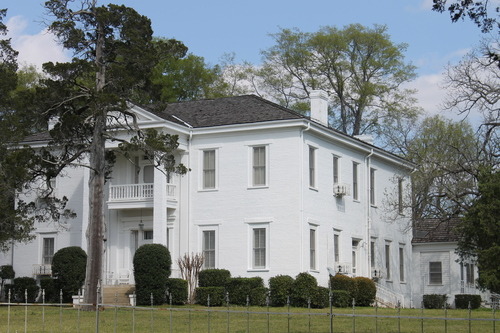
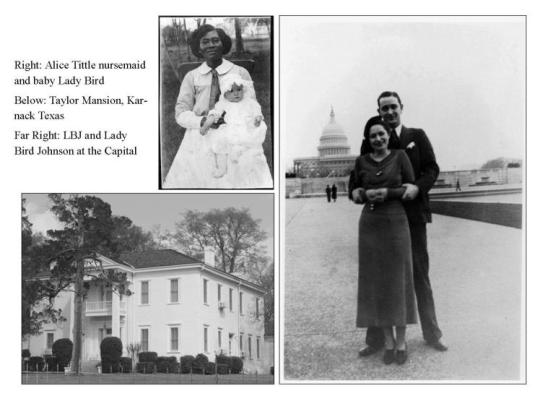
Lady Bird Johnson’s Brick House
Lady Bird Johnson was married to Lyndon Baines Johnson who became president after John F. Kennedy was assassinated in 1963. The Johnson’s were from Texas.
When she was first lady, Mrs. Johnson was known for her desire to beautify America. But her interest went beyond this. She was a strong advocate for conservation and historical preservation.
Her father, Thomas Jefferson Taylor and her mother, Minnie Patillo Taylor lived in the small town of Karnack located in east Texas. Mr. Taylor was a landowner and local merchant. He bought a stately mansion known as The Brick House in 1902.
Lady Bird was the Taylor’s third child and was born in the home.
Milt Andrews a Confederate Colonel, some sources state he was a Captain, had the mansion built in 1843. It was constructed of bricks made by slave hands.
The Brick House is a classic example of antebellum architecture. It has impressive brick columns and three brick fireplaces. Its balcony is 30 feet high. The mansion has four sets of double doors that lead to the home’s central hall. Access to the second story is via an exterior staircase only.
By the time the Taylors bought the home it was in sad need of repair. They undertook extensive renovations. The eccentric owner they bought the mansion from had left one room filled with hickory nuts.
Lady Bird’s mother died when she was four years old. Minnie tripped over the family’s collie in 1912 as she walked down the stairs. She was pregnant at the time and she miscarried. A few days later she died of septicemia.
Lady Bird was christened, Claudia Alta but her nurse, Alice Tittle stating the little girl was “as pretty as a lady bird” named her Lady Bird. This nickname stuck with her the rest of her life.
Lady Bird graduated from the University of Texas with a B.A. in Journalism. After her father died a Taylor relative donated 385 acres of the family estate in 1934. Today this section is a part of the Caddo Lake State Park.
The Taylor family still owns The Brick House and they keep it in pristine condition. Lady Bird’s former home is not only beautiful but it is also haunted.
A well-known legend states that a young girl was struck by lightning in the home and her ghost has haunted her bedroom ever since.
This young lady was the original owner, Milt Andrew’s daughter, Eunice. She went by the name Oonie. One day as she was sitting in her bedroom rocking chair during a storm in the 1860s a bolt of lightning rushed down the chimney and struck her—she was burned and died.
Since her death people say her spirit has never left this room. When the Taylors bought The Brick House her ghost came with it.
Lady Bird stated she never saw or heard this ghost but that every time she was in Oonie’s former bedroom as a little girl she became nervous. She felt something unseen was in the room with her.
Lady Bird said the servants often told her they saw Miss Oonie. They said this ghost was surrounded in light and was slight of build. She wore a white dress and her hair stood on end—the result of being hit by lightning.
In August of 1966, a newspaper article mentions Lady Bird’s brother Tony Taylor and this haunting. He states various family members did hear a woman sobbing in the mansion at night. They also heard creepy sounds of something moving about.
The Taylor family has taken this haunting in stride. For several generations they have felt this female ghost gives the home extra character. They refer to her as “a lady who lives in the house that nobody sees.”
5 notes
·
View notes
Text
Brújula
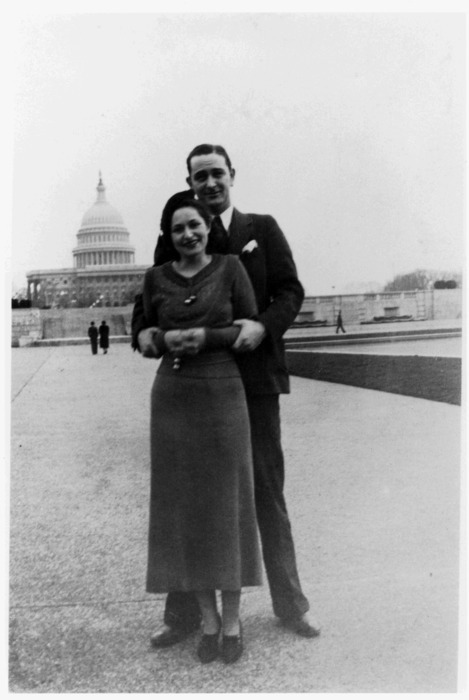
He was coarse and obnoxious. A big, overbearing, profane, restless, ambitious Texan who pushed and prodded and wheeled and dealed his way from poverty in the Texas Hill Country to the most powerful office in the world. She was soft-spoken and eloquent. A gentle, quiet, polite, and comforting presence for her father, her husband, her children, and her country. As the social fabric of the United States began to tear during her husband's Administration, she found a way to literally beautify the nation. On November 17, 1934, Lyndon Baines Johnson was a 26-year-old secretary to Congressman Richard M. Kleberg, the member of the U.S. House of Representatives from the 14th Congressional district of Texas. Johnson was a tall, gangly, anxious, antsy young man. So driven was Johnson that he made sure to personally answer every letter which arrived in Kleberg's office -- whether the Congressman deemed them important or not. Johnson had started his career as a teacher, but it was politics that he was drawn to and politics which he was obsessed with. Very few people truly knew Lyndon Johnson, but everyone who came in contact with him knew that he was somebody. Lyndon's confidence in himself was never quite as high. Throughout his entire life, Johnson felt he needed to press on further and faster in order to prove himself. On November 17, 1934, Claudia Alta Taylor was 21 years old. When she was born, Claudia's nurse said "She's as purty as a lady bird" and the nickname had stuck. Almost nobody called her "Claudia", she would always be "Lady Bird" and it was a fitting name. Lady Bird's mother died when she was just five years old and her beloved father, a wealthy man actively engaged in business, couldn't provide all of the attention she must have hoped for. What he could provide for his lonely daughter was opportunity. Although she came of age in a time (during the Great Depression) and a place (southern Texas) where women rarely received a thorough education, Lady Bird was able to make the most of her intelligence and determination. Not only did she attend college, but Lady Bird graduated from the University of Texas with two bachelor's degrees -- one in history and one in journalism. Following her graduation, Lady Bird hoped to teach in an exotic locale such as Hawaii or Alaska, "But all that never happened because I met Lyndon." On the night of August 1, 1934, Lyndon and Lady Bird met for the first time, introduced by a mutual friend, Eugenia Boehringer Lasseter in Austin. Though their initial meeting was brief, Johnson asked Lady Bird if she would meet him for coffee the next morning and she agreed. Lady Bird nearly had a change of heart on the morning of August 2, 1934 and was close to leaving Johnson stood up on what was supposed to be their first date. That morning, Lady Bird was scheduled to meet with an architect in downtown Austin who the Taylor family had hired to remodel their mansion, the Brick House in Karnack, Texas. The architect's office happened to be next door to Austin's Driskill Hotel and Johnson -- sitting alone inside the hotel's coffee shop -- spotted Lady Bird walking by. Johnson urged Lady Bird to join him and when she did, one of the more unique marriages and partnerships in American political history truly began. Lyndon Johnson hated wasting time. His entire life seemed like a race against the clock. Most of the men on the Johnson side of his family tree had lived relatively short lives before dying of a heart ailment. Johnson always felt that he would not live long, and he often lived each day as if he were going to die that night. Whether it was in the jobs he worked prior to entering public service or in his political career, Johnson wanted results and answers, and he wanted them immediately. In his personal life, Lyndon Johnson was really no different. As they enjoyed coffee and breakfast at the Driskill Hotel during their first date, Johnson peppered Lady Bird with dozens of questions and bombarded Lady Bird with his own feelings, goals, worries, and intentions. Lady Bird was a well-refined, polite young lady with impeccable social skills, so she must have been taken aback by Johnson's unabashed energy and intensity. Yet, she was also captivated by Johnson's passion. After breakfast, Lady Bird accepted an invitation to take a drive through the rural areas surrounding Austin. An early version of LBJ's legendary "Johnson Treatment" persisted throughout their whirlwind afternoon together. By the time Lyndon dropped Lady Bird off -- after spending just a few hours together and meeting her for the first time only 24 hours earlier -- he had proposed marriage. Lady Bird said no to his immediate proposal. Not only did she barely know Lyndon Johnson, but earlier that morning she had even considered skipping their coffee date. But while she declined Johnson's marriage proposal, she didn't deny her interest in him. Later, she would say of their first date that Lyndon "told me all sorts of things that I thought were extraordinarily direct for a first conversation...about how many years he had been teaching, his salary as a secretary to a Congressman, his ambitions, even about all the members of his family, and how much insurance he carried. It was as if he wanted to give me a complete picture of his life and of his capabilities." In truth, that's exactly what Lyndon wanted to do. Although she turned down his proposal, Lyndon and Lady Bird spent several days together that week before Lyndon returned to Congressman Kleberg's office in Washington. Johnson couldn't leave her alone because he wanted "to keep her mind completely on me until the moment I had to leave for Washington." By the time Johnson went back to the Capitol, Lady Bird had met Johnson's parents in Johnson City and Lyndon had met Lady Bird's father in Karnack. Lady Bird's father, Thomas, was an old-fashioned Southern gentleman and Lady Bird was his youngest child and only daughter. A successful businessman and self-made man, Thomas Taylor didn't seem like the type who would mix well with impatient, boorish Lyndon Johnson from the Hill Country. Lyndon himself was full of nervous energy as he and Lady Bird drove to Mr. Taylor's Brick House mansion near the Texas/Louisiana border. He was worried about whether the wealthy Mr. Taylor would look down on the Johnson family's hardscrabble roots and hoping to conduct himself in a way that would impress both Lady Bird and her father. Thomas Taylor told his daughter exactly how he felt about Lyndon Johnson. After Taylor, Johnson, and Lady Bird had dinner at the Brick House, Mr. Taylor excused himself and asked to speak privately with his daughter. With Lyndon no doubt concerned in the other room, Mr. Taylor held nothing back. "Daughter," he said, "you've been bringing home a lot of boys. But this time you've brought a man." Mr. Taylor adored Lyndon Johnson. Scheduled to return to Washington, D.C. the very next day, Lyndon again proposed to Lady Bird that night. Once again, she turned down the idea of a quick marriage, but she encouraged him with a kiss before he started his long drive back to the nation's capital. They had only known each other for a few days and she had declined two marriage proposals during that time, but Lady Bird "had a queer sort of moth-and-flame thing" she later said. "I knew I had met something remarkable, but I didn't know quite what." Once Lyndon Johnson returned to Washington, he continued his pursuit of Lady Bird Taylor. If he didn't talk to her on a long-distance telephone call from Congressman Kleberg's office, Johnson wrote a letter to her every single day. Lyndon was always consumed by work -- particularly answering the Congressman's correspondence -- but things had changed after his visit to Austin. Johnson would still work on the mail as soon as he arrived at the Capitol each morning, but before he did anything else he would find a quiet room and write his daily letter to Lady Bird. To his co-workers, it seemed that every conversation or event or issue would remind him in some way or another of Lady Bird. It was so unusual for Johnson to put so much focus on one of his own interpersonal relationships that the people he worked with at the time would distinctly remember the change in his ways even years later after he had been President of the United States. Back in Texas, Lady Bird Taylor was having a similar experience. "I had never before considered myself a lonely person," she later said. But she "had spent so much of my life by myself that I had gotten used to being alone." The whirlwind that was Lyndon Johnson made an immediate impact on her. "Lyndon came into my life and in one week's time he had become so much a part of me that when he left, I felt his absence terribly. It was embarrassing to admit that so much could happen in such a short time. Here was this man I barely knew talking about marriage and I was seriously considering the idea." While Lyndon kept pressing the idea of marriage, Lady Bird's heart agreed with Johnson while her mind told her that perhaps she should wait. She still barely knew the man, and being married to the secretary of a member of the United States House of Representatives wouldn't have provided any woman with a sense of security. Lady Bird had inherited money from her mother's estate and her father was a wealthy man, but she was unsure of how Lyndon might be able to support her. She was also unsure about being a political wife, telling Lyndon in one letter, "Oh, I know I haven't any business -- not any proprietary interest -- but I would hate for you to go into politics." Lyndon was certain of two things that he wanted and needed in his life. One was politics and though he was just a Congressional secretary, he was also intensely studying how Congress worked and building a foundation and network of political contacts back in Texas with his voluminous correspondence from the office of Congressman Kleberg. The other want and need was Lady Bird Taylor's hand in marriage. On October 23, 1934, Johnson wrote Lady Bird a letter from Kleberg's office that expressed both of those wants and needs. "This morning I'm ambitious, proud, energetic and very madly in love with you," wrote Johnson. "I want to see people -- want to walk thru' the throngs -- want to do things with a drive. If I had a box I would almost make a speech this minute. Plans, ideas, hopes -- I'm bubbling over with them." The hope that bubbled most intensely was his dream to walk down the aisle with Lady Bird. An overlooked aspect of Lyndon Johnson's life and character is his sensitivity. In later years, that sensitivity was highlighted by insecurity and moodiness. In the autumn of 1934, that sensitivity allowed him to articulate his feelings to Lady Bird with astonishing clarity and demonstrated an impressive ability to recognize and express exactly what he was doing and why he was proposing marriage so quickly: "I see something I know I want. I immediately exert efforts to get it. I do or I don't, but I try and do my best. You see something you might want. You tear it to pieces in an effort to determine if you should want it. Then you wonder why you want it, and conclude that maybe the desire isn't an 'everlasting' one and that the 'sane' thing to do is to wait a year or so, and then if you still want it, to decide at that time whether or not you should make an effort to get it." At the beginning of November 1934, Lyndon Johnson couldn't wait any longer. It was obvious to him that Lady Bird loved him, and he knew he loved her. Lady Bird was still turning down Lyndon every time he pleaded with her to marry him immediately. They had only known one another for about three months, but Lyndon forced the issue by pulling his Ford roadster into the long driveway at Lady Bird's father's mansion, the Brick House, in Karnack, Texas. "Let's get married," Lyndon said. "Not next year, after you've done over the house, but about two weeks from now, or right away. We either get married now or we never will And if you say goodbye to me, it just proves to me that you just don't love me enough to dare to. And I just can't bear to go on and keep wondering if it will ever happen." Lady Bird was still torn and turned to her father for advice. "Bird," said Mr. Taylor, the successful businessman who admired the guts and determination of Lady Bird's suitor. "Some of the best deals are made in a hurry." Thomas Taylor's words seemed to validate one of Lyndon Johnson's frequent exhortations in his letters to Lady Bird, "Why must we wait...to begin to do the things we want to do forever and ever?". On the evening of November 16, 1934, Lady Bird Taylor finally said, "Yes", and agreed to become Mrs. Lyndon B. Johnson. Just because Lady Bird agreed to marry him didn't mean that Lyndon was satisfied. The very next day, November 17, 1934, the newly-engaged couple drove nearly 400 miles to San Antonio, Texas. Lyndon had a friend in San Antonio who owed his political career to Johnson. Dan Quill had been appointed postmaster in San Antonio after Johnson recommended his nomination to his boss, Congressman Richard Kleberg. Johnson knew it would be difficult to find someone who would agree to marry him and Lady Bird on such short notice, but Quill was determined to return the favor for Lyndon. As the couple drove to San Antonio from Karnack, Quill used his influence to acquire a marriage license for Lyndon and Lady Bird on almost no advance notice. More impressively, Quill was able to talk an Episcopalian priest into marrying a couple that the priest had never met and who had only been engaged to be married for a few hours. With obvious reluctance because he had no prenuptial meetings with Lyndon and Lady Bird, the Reverend Arthur E. McKinistry nevertheless officiated a wedding on the evening of November 17, 1934 at St. Mark's Episcopal Church in San Antonio. Quill served as Johnson's best man, a surprised local friend of Lady Bird's served as Maid of Honor, and there was just one other witness to the ceremony. When Reverend McKinistry asked for the rings, the wedding ceremony was paused as Quill ran across the street to Sears, Roebuck and brought back a selection of wedding bands for the couple to choose from. After paying $2.50 a piece for the temporary rings, Lyndon and Lady Bird places them on each other's fingers and were officially proclaimed husband and wife. The Johnsons -- lanky Lyndon in a perpetually rumpled business suit and petite Lady Bird in a basic lavender dress -- celebrated their wedding with a dinner at a restaurant on the rooftop of St. Anthony's Hotel two blocks south of the church. They spent their first night of marriage together at San Antonio's Plaza Hotel. The next morning, the newlyweds drove to Corpus Christi and caught a train to Monterrey, Mexico for a brief honeymoon. One of the earliest pictures of the couple shows them standing in a boat while visiting the Floating Gardens of Xochimilco. For Lady Bird, the honeymoon was an eye-opener in many ways. A passionate lover and advocate of natural beauty and wildlife, Lady Bird was thrilled to explore the scenery and culture in Mexico. The honeymoon, however, also gave her an indication of the live she was beginning. Lyndon spent a significant amount of time talking about politics and itching to get back to Washington. As Lady Bird would later say, "I was a born sight-seer, but Lyndon was a born people-seer. He indulged me on that trip, but the truth is he wasn't much intrigued." After Mexico, Lyndon and Lady Bird moved into a one-bedroom apartment in Washington, D.C., and their life together truly began.
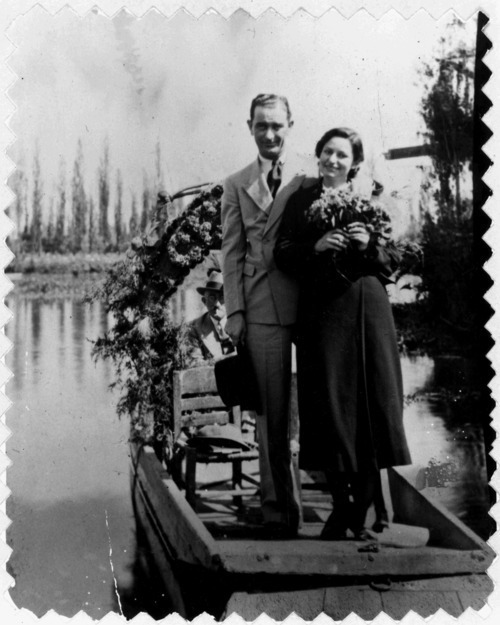
It is impossible to do justice to the story of the relationship of Lyndon and Lady Bird Johnson in just a simple essay. It is worthy of (and has been the sole subject of) entire books. There are so many levels, so much depth, and such extraordinarily complexity to their marriage that a definitive history requires thorough study and an ample commitment of time and space.
We do know that Lyndon Baines Johnson was not always the greatest husband. Just as apparent, however, is that Lady Bird Johnson was indeed one of the greatest, most influential, most loyal wives in American political history. As First Lady, she not only understood her position in her home, but recognized the opportunities that she had to serve her country. "The Constitution of the United States," Lady Bird said, "does not mention the First Lady. She is elected by one man only. The statute books assign her no duties; and yet, when she gets the job, a podium is there if she cares to use it. I did."
Exceedingly capable, Lady Bird expanded the role of First Lady and marshaled all of her intelligence, ability, and beliefs in order to become a transformational activist in American life. Every First Lady since Lady Bird has played an influential role in the lives of Americans, and that's not solely because of Lady Bird but mostly so. Whether it was her campaigns for environmental protection and conservation, beautification, her support for civil rights, or her advocacy for those suffering from poverty or social injustice, Lady Bird was a force for positive change.
It is her most important role, however, which is often overlooked. Lyndon Johnson was not easy to live with. His larger-than-life personality and overflowing ego was constantly engaged in a see-saw battle with insecurity, a lack of confidence, and an overpowering fear of failure. In every election that Johnson ever contested, there came a point where he was dominated by the thought that he would lose and all but decide to quit the race before Election Day. In almost every one of those elections (and he only lost one election in his long political career), LBJ fell seriously ill shortly before Election Day. Whether it was due to Johnson's tendency to work himself to exhaustion or partly due to a psychosomatic condition is not completely clear, but Doris Kearns Goodwin would later write that "Personal rejection was so unbearable to Johnson, so mortally threatening, that withdrawal was necessary...Episodes of rejection, actual or apprehended, seem[ed] to cripple Johnson's faculties and even, at times, interrupt his normal state of physical health and vitality."
It was Lady Bird who could calm him in troubled times. While Lyndon Johnson is remembered as a political maestro, particularly in legislative politics, Lady Bird had great political intuition and knew how to handle Lyndon himself. LBJ could be cruel and coarse -- not just to his colleagues and staff, but to Lady Bird. In a 1994 interview with The Washington Post, Lady Bird admitted as much. "Our was a compelling love," she said. "Lyndon bullied me, coaxed me, at times even ridiculed me, but he made me more than I would have been. I offered him some peace and quiet, maybe a little judgment."
That humility was not false humility; it was Lady Bird's characteristically earnest belief. Yet, she arguably offered him more than he offered her. When he was sick, she helped care for him. When he was depressed, she helped make his life as easy as possible. She motivated him in a way that nothing else could -- not even his intense drive to prove himself or ceaseless ambition for the power to help change things. If Lyndon Johnson was a hurricane -- a force to be reckoned with, Lady Bird Johnson was the quiet breeze and warm sunshine which helped settle everything in the storm's wake. I'm not sure Lyndon Johnson made Lady Bird more than she could have been, but I'm positive that Lady Bird helped LBJ become who he was.
In many of the books and interviews that I've read about the lives and times, accomplishments and failures of Lyndon and Lady Bird Johnson, I have frequently come across the word "anchor" to describe her influence on the 36th President of the United States. The intent of that description is to demonstrate how she helped LBJ remain grounded. It's a positive label, but it's not the word that comes to my mind when I think about their unique relationship.
Instead, the word that comes to my mind is a word that Lyndon Johnson probably heard many times when he was just out of college and teaching at a small school for impoverished Mexican children in Cotulla, Texas. The word is "brújula" and it is the Spanish word for "compass". Lady Bird wasn't Lyndon's anchor. She was his "brújula" -- the compass which helped him find his way.
Lyndon Baines Johnson could never stay in one place, so an anchor wasn't what he needed. LBJ was always on the move, always going somewhere. Perhaps that's why he knew he needed Lady Bird before she realized how she felt about him. He recognized what she could be for him, and he couldn't let her get away. For Lyndon, in a life full of historic accomplishments, it might have been his best decision. Until the day he Lyndon Johnson died in January 1973, whenever he was lost, whenever he was disoriented, whenever he found himself wondering where he was, where he was going, and if he could go on, there was Lady Bird -- his brújula -- to guide him on his way.
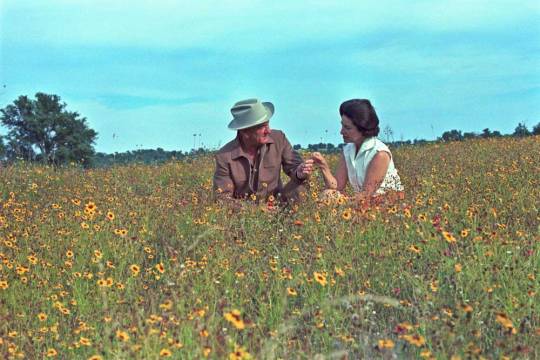
#History#Presidents#Lyndon B. Johnson#Lyndon Johnson#LBJ#Lady Bird Johnson#First Families#Presidential Marriages#President Johnson#Lady Bird#LBJ Ranch#LBJ Library#Presidential History#First Ladies#Politics#Political History
28 notes
·
View notes
Text

Chapter One
Word Count: 1,936
Warnings: Maybe mild language (I forget), tiny bit of violence (it isn’t described besides a bruise/mark and hinting), government people and maybe some politics (?).
Alright, this one’s three and a half weeks behind schedule, but who cares. It’s done now. So far the only criticism I’ve gotten on this one is that the dialogue in the beginning is too long and the ending is too short, so I’ll try to fix that next time. :)
Léonie enjoyed listening to Florette whistle in the morning. It was a nice, peaceful way to wake up, especially because the alternative would be a loud alarm. Today, even though it was summer, Florette was whistling a Christmas song, but Léonie didn’t mind. It still made her happy.
The room’s large windows gave the two of them a wonderful view of the lake. That was the one good thing about waking so early in the morning: everything was calm and quiet. The dim light from the moon lit the room more than their weak ceiling light ever could. A few birds sang and flew past the window.
“Good morning, Florette,” Léonie turned over and looked down from her top bunk. Florette was stretching on the floor, as she had done every morning for almost three years.
“Mornin’,” she replied.
“How did you sleep?”
“Not as well as I could’ve.”
“That is too bad,” Léonie laid on her back and looked to the ceiling. She hardly had any wall space next to her bunk, so she had resorted to decorating the ceiling.
Ms. LaPore had only allowed the volunteers to take objects home from their missions that could fit in a tiny plastic bag. This resulted in the volunteers having an unusual amount of posters and short books and not clothes or larger objects. Léonie’s ceiling was mostly covered by old movie posters and magazine covers, plus several postcards.
“We’ve gotta hurry up,” Florette tied her shoelaces, “The meeting’s early.”
“I am aware,” Léonie scooted to the end of her bed and jumped down, “Did you read over your folder?”
“Nope. I’ll do that during breakfast,” Florette said. Léonie sighed.
Léonie walked over to her dresser and pulled out her uniform: a grey shirt, black pants, and simple white shoes. She had been instructed to wear her name badge this time, so she pinned it on her shirt.
“Why don’t you wear a dress or something,” Florette was sitting on the lower bunk now, watching a deer walk in front of the window.
“I am not supposed to.” It was only then Léonie realized Florette was not completely in uniform. She was wearing a dark green flannel over her shirt and her socks were pink. Florette’s hair was in two buns, which was against Assembly policies.
“Take those off, Florette,” Léonie put her own white socks on, “and change your hair.”
“I’m going to wear my hair however I want.”
“You will be in trouble.”
“I wasn’t last time.”
“Last time, Mr. Steinberg interrupted Ms. LaPore as she was trying to discipline you. That was simply luck,” Léonie put her final shoe on and began making her bed before it was time for breakfast.
“Whatever,” Florette mumbled, laying on her back, “I don’t care.”
Léonie shook her head and sat down on the rocking chair next to the window. She picked up the book she was currently reading and opened it to the page she had bookmarked. Léonie had read Aesop’s Fables innumerous times now, but it was one of the only books she had and she didn’t want to bother Mr. Johnson for any new ones.
Within five minutes of Léonie sitting down, there was a knock on their door. Florette opened it, revealing Reese on the other side.
“Breakfast’s ready,” she said, “I wouldn’t get too excited about it, though.”
“What is it?” Florette asked.
“Water and toast. There isn’t any butter or jam, either,” Reese said.
Florette groaned and walked past Reese.
“At least it is something,” Léonie said as she exited the room. Reese shut the door behind them.
Breakfast was held in the kitchen of the main house. The main house, which was owned by Mr. Steinberg, was a large, brick building from the early 1900s. It had seven bedrooms, all of which were converted to offices, a large basement, and multiple repurposed living rooms. It also had a nice conservatory, which Mr. Steinberg and, occasionally, Danilo spent time in. The main house and the volunteer’s guesthouse were separated by a large yard, forested area, and pool.
Danilo met the tree of them in the hallways and, together, they grabbed their folders and began walking to breakfast.
“How did you sleep?” Léonie asked.
“Fine.”
“Bene.”
“That’s good.” Léonie said.
The smell of fresh grass wafted past them. The yard had been cut recently, probably for the officials who were visiting. A pool boy was taking the leaves that had fallen out of the pool and another was cleaning the stone.
As the volunteers neared the house, they could see a large group of men in suits and women in nice dresses crowded in the conservatory. Others were viewable through the windows and glass door.
“What the crap is going on here?” Florette said.
“Did you not read the stuff in your folder?” Reese asked.
“No.”
“Oh my God, you idiot.”
“If I read this stuff,” Florette motioned to her folder, “would I know who those people are?”
“Duh!”
Danilo shushed the two women as the glass doors opened in front of them.
“Volunteers, I need to speak to you in the kitchen,” Ms. LaPore whispered almost immediately after they stepped into the house. She examined their appearances quickly, before stopping at Florette, “Especially you, Travere.”
The volunteers made their way to the kitchen. It was noticeably quieter, and colder, than the entryway. The only person in the room was a maid, who was cleaning the metal counters. The room was all white except for the metal counters, which had dark red details, appliances, and chairs. There was a plant in the corner and a chalkboard, but otherwise, the room was empty.
“You’re late,” Ms. LaPore snapped, her anger visible on her face. Her red dress and black heels seemed to match to her mood perfectly, “I don’t tolerate late volunteers.”
“I’m sorry, ma’am, but it took a while to.. find our uniforms,” Reese said.
“Really? All of you had trouble finding one of your three pairs of uniforms?” Ms. LaPore asked, then she turned to Florette, “I see Travere he-”
“It’s Miss. Travere, Juliette.”
“Do not address me by my first name,” Ms. LaPore hissed at Florette, “I see Travere had no problem improvising.”
All eyes turned to Florette’s outfit. She pulled the legs of her pants down so that her socks were covered, but her flannel was simply unhidable.
“Do you have an explanation for your attire, Travere?” Ms. LaPore said.
“Uh, yeah, Juliette,” Florette responded. Léonie mumbled a quiet ‘Oh my goodness’ and shook her head. Florette continued, “I thought, because I’m ninety-two and not incapable, I should be able to dress myself in whatever I see fit.”
Ms. LaPore’s face turned bright red and she stormed towards Florette. Almost like they were in a cartoon, Ms. LaPore grabbed the back of Florette’s collar and began pulling her towards the other room. Before they entered, Ms. LaPore turned to the rest of the group, “I want complete silence in here until I return! Anyone who speaks will end up like Travere here.”
The door slammed behind them and the three volunteers were left alone in the kitchen. None of them spoke and they ate their toast in silence.
A man in a business suit worth more than Léonie had seen in her lifetime walked in the room quickly to grab some cups. His glare lingered on the three of them and their measly pieces of toasts as he made his way through the room. Other than that interruption, their breakfast went on quietly.
The moment Danilo finished his toast, Florette walked through the doorway. Her head was down, hiding a bright red mark on her face, and her arms were crossed in front of her.
“Ms. LaPore says to meet in the amphitheater,” Florette said as she grabbed her piece of toast and continued towards the other door.
-
The amphitheater was in the front woods, so that guests could not see the volunteer’s housing. It was surrounded by trees, but because of its weekly cleaning, there was no sign of dirt on the stage or seating. There was a circle stage made of bricks in a herringbone pattern. The seating was also brick, and for this occasion, cushions had been put at each of the guests’ spots. The volunteers had been placed in the very back, with only Mr. Johnson to watch over them.
After a few minutes of the volunteers mindlessly flipping through their folders and Florette refusing to talk to Léonie, Mr. Steinberg and DeBurrow began leading the guests towards the amphitheater. Some of them looked at the amphitheater in an awe-like wonder, while others, who were unimpressed with the small size, chatted among themselves. The volunteers watched as the guests filed through the rows of seating and selected their spots. Most of them already had partners and sat together. A few of them were in military uniforms.
“Good morning, ladies and gentlemen,” Mr. DeBurrow spoke. He stood behind the pedestal that was positioned in the middle of the stage. He shuffled some notecards, “I thank you all for being here so early in the morning.”
Mr. DeBurrow cleared his throat, “Did you know that 98% of the officials in this room were formerly employed by their militaries? Mr. Howard Steinberg, Mrs. Juliette LaPore, Mr. Xavier Johnson, and myself included. Yet, 100% of you still work in the governm-”
Mr. Johnson awkwardly ran down the terraced seating down to Mr. DeBurrow. He whispered something in the elder man’s ear and then returned to the volunteers.
“Excuse me,” Mr. DeBurrow, “I know you all have been out of school for years, but I need to take attendance. We’ll do this quickly.
Anyone associated with the United States Central Intelligence, please raise your hand.”
Two men raised their hands. Mr. DeBurrow crossed something out on a piece of paper and told them to put their hands down.
“British Secret Intelligence Service?” A woman who resembled Reese raised her hand along with another man.
“Polish… Agencja Wywiadu?” A woman raised her hand.
Mr. DeBurrow called out names for at least five minutes until Florette was sure he had listed every country in the world. Well, every country except two.
“Now that that’s finished,” Mr. DeBurrow glanced at Mr. Johnson, “I can continue my speech. You all are gathered here today because you are, one, the best of the best in your respective countries and, two, you are some of the few individuals aware of the troubles brewing in China and Russia.”
A wave of murmurs rushed over the amphitheater. A few individuals seemed confused at the mention of the two countries, but were quickly informed by their companions.
“As of two weeks ago, China and Russia have been at war. It started near the town of Jalai Nur and Lake Hulun, on the Northern Chinese-Russian border,” suddenly, several holograms appeared behind Mr. DeBurrow. The Assembly had installed them instead of screens because of their effectiveness and inability to get wet. Only a few of the crowd was surprised by their appearance, as holograms and projections had been used for at least a decade.
A map of Russia and China, plus several statistics, appeared on the projection behind Mr. DeBurrow. He grabbed his pointing stick and directed the crowd’s attention to the map.
“I won’t get into much detail on the attacks so far,” Léonie sighed in frustration. She wanted to know what was going on. Mr. DeBurrow continued, “but if this war between these two countries carries on any farther, the world will irreversibly be thrust into World War III.”
#assembly of absolutists#11.. 4.. 3..#writblr#writeblr#writers of tumblr#writers on tumblr#writing#my writing#chapter two#leonie gloria thalmann#florette priscille travere#danilo santo potenza#reese daisy ellis#xavier clement johnson#fiction#realistic fiction#my oc#my ocs#imjustalonesomewriteblr
4 notes
·
View notes
Text
Favourite films watched in 2018
I arranged them into broad categories -- other than that they’re in no particular order.
Indie
River of Grass, Meek’s Cutoff and Night Moves (Kelly Reichardt, 1994, 2010 and 2013)
Tangerine and The Florida Project (Sean Baker, 2015 and 2017)
We Need to Talk About Kevin (Lynne Ramsay, 2011)
Winter’s Bone (Debra Granik, 2010)
Kumiko, the Treasure Hunter (David Zellner, 2014)
Ginger & Rosa (Sally Potter, 2012)
Cracks (Jordan Scott, 2009)
I Am Not a Witch (Rungano Nyoni, 2017)
Turn the River (Chris Eigeman, 2007)
Hello I Must Be Going (Todd Louiso, 2012)
Shuttle Life (Tan Seng Kiat, 2017)
On Body and Soul (Testről és lélekről, Ildikó Enyedi, 2017)
Vagabond (Sans toit ni loi, Agnès Varda, 1984)
Easy Living (Adam Keleman, 2017)
Mother of George (Andrew Dosunmu, 2013)
Khadak (Peter Brosens and Jessica Hope Woodworth, 2006)
Shirkers (Sandi Tan, 2018)
Comedy
Lipstick Under My Burkha (Alankrita Shrivastava, 2016)
Addicted to Fresno (Jamie Babbit, 2015)
The Spy Who Dumped Me (Susanna Fogel, 2018)
Edge of Seventeen (David Moreton, 1998)
Secretary (Steven Shainberg, 2002)
Experimental
Scorpio Rising (Kenneth Anger, 1963)
Always Shine (Sophia Takal, 2016)
The Midnight Swim (Sarah Adina Smith, 2014)
La Jetée (Chris Marker, 1962)
Daisies (Sedmikrásky, Věra Chytilová, 1966)
Classics
Reflections in a Golden Eye (John Huston, 1967)
Dead Ringer (Paul Henreid, 1964)
Horror
Creep and Creep 2 (Patrick Brice, 2014 and 2017)
The Poughkeepsie Tapes and As Above, So Below (John Erick Dowdle, 2007 and 2014)
Raw (Grave, Julia Ducournau, 2016)
Cargo (Ben Howling and Yolanda Ramke, 2017)
Hard Candy (David Slade, 2005)
Snowtown (Justin Kurzel, 2011)
Banshee Chapter (Blair Erickson, 2013)
Mandy (Panos Cosmatos, 2018)
Science fiction
Primer and Upstream Color (Shane Carruth, 2004 and 2013)
Resolution and The Endless (Justin Benson and Aaron Moorhead, 2012 and 2017)
Midnight Special (Jeff Nichols, 2016)
Arrival (Denis Villeneuve, 2016)
Into the Forest (Patricia Rozema, 2015)
Ex Machina (Alex Garland, 2014)
Under the Skin (Jonathan Glazer, 2013)
Liquid Sky (Slava Tsukerman, 1982)
Bird Box (Susanne Bier, 2018)
Action
Hell or High Water (David Mackenzie, 2016)
M.F.A. (Natalia Leite, 2017)
Revenge (Coralie Fargeat, 2017)
Brick (Rian Johnson, 2005)
Full list of 306 films watched in 2018 under the cut!
January
The Devil’s Candy (Sean Byrne, 2015)
A United Kingdom (Amma Asante, 2016)
Creep (Patrick Brice, 2014)
The Witch (Robert Eggers, 2015)
The Blues Brothers (John Landis, 1980)
The Lost Boys (Joel Schumacher, 1987)
Midnight Special (Jeff Nichols, 2016)
Arrival (Denis Villeneuve, 2016)
We Need to Talk About Kevin (Lynne Ramsay, 2011)
Life (Daniel Espinosa, 2017)
Logan (James Mangold, 2017)
Creep 2 (Patrick Brice, 2017)
The Discovery (Charlie McDowell, 2017)
Otherlife (Ben C. Lucas, 2017)
The Dressmaker (Jocelyn Moorhouse, 2015)
Bokeh (Geoffrey Orthwein and Andrew Sullivan , 2017)
February
Get Out (Jordan Peele, 2017)
The Handmaiden (아가씨, Agassi, Park Chan-wook, 2016)
Brick (Rian Johnson, 2005)
Looper (Rian Johnson, 2012)
Winter’s Bone (Debra Granik, 2010)
Thelma (Joachim Trier, 2017)
The Guest (Adam Wingard, 2014)
Beach Rats (Eliza Hittman, 2017)
Let the Right One In (Låt den rätte komma in, Tomas Alfredson, 2008)
Cameraperson (Kirsten Johnson, 2016)
Sweet Bean (あん, An, Naomi Kawase, 2015)
The Hallow (Corin Hardy, 2015)
Cloverfield (Matt Reeves, 2008)
10 Cloverfield Lane (Dan Trachtenberg, 2016)
The Cloverfield Paradox (Julius Onah, 2018)
Moonlight (Barry Jenkins, 2016)
28 Days Later (Danny Boyle, 2002)
Take Shelter (Jeff Nichols, 2011)
Ginger Snaps (John Fawcett, 2000)
River of Grass (Kelly Reichardt, 1994)
Old Joy (Kelly Reichardt, 2006)
Reflections in a Golden Eye (John Huston, 1967)
March
Raw (Grave, Julia Ducournau, 2016)
Palo Alto (Gia Coppola, 2013)
By the Sea (Angelina Jolie, 2015)
Lady Bird (Greta Gerwig, 2017)
Jupiter Ascending (The Wachowskis, 2015)
Irreplaceable You (Stephanie Laing, 2018)
Kumiko, the Treasure Hunter (David Zellner, 2014)
Annihilation (Alex Garland, 2018)
Ravenous (Les Affamés, Robin Aubert, 2017)
The Bad Batch (Ana Lily Amirpour, 2016)
Notes on Blindness (Peter Middleton and James Spinney, 2016)
Breathe (Respire, Mélanie Laurent, 2014)
Night Moves (Kelly Reichardt, 2013)
Carol (Todd Haynes, 2015)
Lovesong (So Yong Kim, 2016)
Upstream Color (Shane Carruth, 2013)
April
ARQ (Tony Elliott, 2016)
Primer (Shane Carruth, 2004)
Meek’s Cutoff (Kelly Reichardt, 2010)
Certain Women (Kelly Reichardt, 2016)
The Lady from Shanghai (Orson Welles, 1947)
Waking Life (Richard Linklater, 2001)
Roman Holiday (William Wyler, 1953)
American Honey (Andrea Arnold, 2016)
Maurice (James Ivory, 1987)
The Silent House (La Casa Muda, Gustavo Hernández, 2010)
Viral (Ariel Schulman and Henry Joost, 2016)
Buster’s Mal Heart (Sarah Adina Smith, 2016)
Waitress (Adrienne Shelly, 2007)
Grey Gardens (Albert and David Maysle, 1975)
Ginger & Rosa (Sally Potter, 2012)
Cracks (Jordan Scott, 2009)
Into the Forest (Patricia Rozema, 2015)
A New Leaf (Elaine May, 1971)
Vertigo (Alfred Hitchcock, 1958)
The Beguiled (Sofia Coppola, 2017)
Scarface (Brian De Palma, 1983)
The Violent Years (William Morgan, 1956)
The Ritual (David Bruckner, 2017)
Casting JonBenet (Kitty Green, 2017)
Slums of Beverly Hills (Tamara Jenkins, 1998)
We’ve Forgotten More Than We Ever Knew (Thomas Woodrow, 2017)
Love and Other Cults (Kemonomichi, Eiji Uchida, 2017)
You Were Never Really Here (Lynne Ramsay, 2017)
Shirley: Visions of Reality (Gustav Deutsch, 2013)
Catfight (Onur Tuckel, 2017)
Pyewacket (Adam MacDonald, 2017)
May
Lick the Star (Sofia Coppola, 1998)
Scorpio Rising (Kenneth Anger, 1963)
Novitiate (Maggie Betts, 2017)
The Tree of Life (Terrence Malick, 2011)
The Happiest Day in the Life of Olli Mäki (Hymyilevä mies, Juho Kuosmanen, 2016)
Dead Reckoning (John Cromwell, 1947)
Human Flow (Ai Weiwei, 2017)
Mystery Train (Jim Jarmusch, 1989)
Dawson City: Frozen Time (Bill Morrison, 2016)
The Killing of a Sacred Deer (Yorgos Lanthimos, 2017)
I Am Not a Witch (Rungano Nyoni, 2017)
Cléo from 5 to 7 (Cléo de 5 à 7, Agnès Varda, 1962)
Orbiter 9 (Órbita 9, Hatem Khraiche, 2017)
M.F.A. (Natalia Leite, 2017)
Lipstick Under My Burkha (Alankrita Shrivastava, 2016)
Kedi (Ceyda Torun, 2016)
Deidra and Laney Rob a Train (Sydney Freeland, 2017)
The Most Dangerous Game (Irving Pichel and Ernest B. Schoedsack, 1932)
Girl Asleep (Rosemary Myers, 2015)
Always Shine (Sophia Takal, 2016)
The Monster (Bryan Bertino, 2016)
Desert Hearts (Donna Deitch, 1985)
Addicted to Fresno (Jamie Babbit, 2015)
Beyond a Reasonable Doubt (Fritz Lang, 1956)
The Fits (Anna Rose Holmer, 2015)
Hell or High Water (David Mackenzie, 2016)
The Midnight Swim (Sarah Adina Smith, 2014)
The Quiet Hour (Stéphanie Joalland, 2014)
Synchronicity (Jacob Gentry, 2015)
Who’s Afraid of Virginia Woolf? (Mike Nichols, 1966)
Pod (Mickey Keating, 2015)
Turn the River (Chris Eigeman, 2007)
Tangerine (Sean Baker, 2015)
Frequencies (Darren Paul Fisher, 2013)
Spring (Justin Benson and Aaron Moorhead, 2014)
Time Lapse (Bradley D. King, 2014)
Meet Me There (Lex Lybrand, 2014)
Ex Machina (Alex Garland, 2014)
The Florida Project (Sean Baker, 2017)
Berberian Sound Studio (Peter Strickland, 2012)
Laggies (Lynn Shelton, 2014)
Starlet (Sean Baker, 2012)
Dead Ringer (Paul Henreid, 1964)
The Doom Generation (Gregg Araki, 1995)
The Riot Club (Lone Scherfig, 2014)
Berlin Syndrome (Cate Shortland, 2017)
Dude (Olivia Milch, 2018)
Nightcrawler (Dan Gilroy, 2014)
June
Hello I Must Be Going (Todd Louiso, 2012)
Romy and Michele’s High School Reunion (David Mirkin, 1997)
Mystery Road (Ivan Sen, 2013)
The Double (Richard Ayoade, 2013)
Dear White People (Justin Simien, 2014)
The Selfish Giant (Clio Barnard, 2013)
Don’t Breathe (Fede Álvarez, 2016)
Marina Abramović: The Artist is Present (Matthew Akers, 2012)
Hot Bot (Michael Polish, 2016)
Beneath the Harvest Sky (Aron Gaudet and Gita Pullapilly, 2013)
Tim’s Vermeer (Teller, 2013)
The Firefly (La Luciérnaga, Ana Maria Hermida, 2015)
Twinsters (Samantha Futerman and Ryan Miyamoto, 2015)
Resolution (Justin Benson and Aaron Moorhead, 2012)
Enemy (Denis Villeneuve, 2013)
Mother of George (Andrew Dosunmu, 2013)
We Are What We Are (Jim Mickle, 2013)
The Battery (Jeremy Gardner, 2012)
Crystal Fairy & The Magical Cactus (Sebastián Silva , 2013)
Boy (Taika Waititi,2010)
The Perks of Being a Wallflower (Steven Chbosky, 2012)
White Bird in a Blizzard (Gregg Araki, 2014)
The American (Anton Corbijn, 2010)
Ocean’s Eight (Gary Ross, 2018)
Compliance (Craig Zobel, 2012)
Seeking a Friend for the End of the World (Lorene Scafaria, 2012)
Weekend (Andrew Haigh, 2011)
Under the Skin (Jonathan Glazer, 2013)
July
Martha Marcy May Marlene (Sean Durkin, 2011)
Safety Not Guaranteed (Colin Trevorrow, 2012)
Hard Candy (David Slade, 2005)
Duck Butter (Miguel Arteta, 2018)
The Artist (Michel Hazanavicius, 2011)
Another Earth (Mike Cahill, 2011)
Melancholia (Lars von Trier, 2011)
Woodshock (Kate and Laura Mulleavy, 2017)
Hanna (Joe Wright, 2011)
Snowtown (Justin Kurzel, 2011)
Aloft (Claudia Llosa, 2014)
A Fantastic Woman (Una mujer fantástica, Sebastián Lelio, 2017)
The Feels (Jenée LaMarque, 2017)
The Endless (Justin Benson and Aaron Moorhead, 2017)
Shuttle Life (Tan Seng Kiat, 2017)
I Origins (Mike Cahill, 2014)
The Taking of Deborah Logan (Adam Robitel, 2014)
Chasing Ice (Jeff Orlowski, 2012)
Manchester By the Sea (Kenneth Lonergan, 2016)
The Bar (El Bar, Álex de la Iglesia, 2017)
Mr. Roosevelt (Noël Wells, 2017)
Woman Walks Ahead (Susanna White, 2017)
The Manual (William Magness, 2017)
The Conjuring (James Wan, 2013)
Oculus (Mike Flanagan, 2013)
The Eye (Pang brothers, 2002)
August
The Overnight (Peter Brice, 2015)
Axolotl Overkill (Helene Hegemann, 2017)
Little Sister (Zach Clark, 2016)
Witchfinder General (Michael Reeves, 1968)
Secretary (Steven Shainberg, 2002)
The Quiet Earth (Geoff Murphy, 1985)
The Hunger (Tony Scott, 1983)
They (Anahita Ghazvinizadeh, 2017)
Revenge (Coralie Fargeat, 2017)
Cargo (Ben Howling and Yolanda Ramke, 2017)
Fast Times at Ridgemont High (Amy Heckerling, 1982)
Radius (Caroline Labrèche and Steeve Léonard, 2017)
17 Girls (17 Filles, Delphine Coulin and Muriel Coulin, 2011)
The Deuce of Spades (Faith Granger, 2011)
The Bank Job (Roger Donaldson, 2008)
La Jetée (Chris Marker, 1962)
Train to Busan (부산행, Busanhaeng, Yeon Sang-ho, 2016)
As Above, So Below (John Erick Dowdle, 2014)
Liquid Sky (Slava Tsukerman, 1982)
Wild Zero (Tetsuro Takeuchi, 1999)
Multiple Maniacs (John Waters, 1970)
The Lifeguard (Liz W. Garcia, 2013)
The Umbrellas of Cherbourg (Les Parapluies de Cherbourg, Jacques Demy, 1964)
The Beales of Grey Gardens (Albert Maysles, David Maysles and Ian Markiewicz, 2006)
The Edge of Seventeen (Kelly Fremon Craig, 2016)
Salesman (Albert Maysles, David Maysles and Charlotte Zwerin, 1969)
Easy Living (Adam Keleman, 2017)
Going Back (Adam Keleman, 2010)
A Series of Acts (Adam Keleman, 2006)
Long Days (Adam Keleman, 2012)
Okja (Bong Joon-ho, 2017)
Before I Fall (Ry Russo-Young, 2017)
The Poughkeepsie Tapes (John Erick Dowdle, 2007)
Three Colours: Blue (Krzysztof Kieślowski, 1993)
Three Colours: White (Krzysztof Kieślowski, 1994)
Three Colours: Red (Krzysztof Kieślowski, 1994)
Island of Lost Souls (Erle C. Kenton, 1932)
Khadak (Peter Brosens and Jessica Hope Woodworth, 2006)
The Lure (Córki dancingu, Agnieszka Smoczyńska, 2015)
Vagabond (Sans toit ni loi, Agnès Varda, 1984)
Little Evil (Eli Craig, 2017)
September
The Harder They Come (Perry Henzell, 1972)
Isle of Flowers (Ilha das Flores, Jorge Furtado, 1989)
Beat Girl (Edmond T. Gréville, 1960)
On Body and Soul (Testről és lélekről, Ildikó Enyedi, 2017)
Village of the Damned (Wolf RIlla, 1960)
Tampopo (タ��ポポ, Tanpopo, Juzo Itami, 1985)
Mustang (Deniz Gamze Ergüven, 2015)
Outside In (Lynn Shelton, 2017)
Voyeur (Myles Kane, 2017)
The Land of Steady Habits (Nicole Holofcener, 2018)
Clouds of Sils Maria (Olivier Assayas, 2014)
Already Tomorrow in Hong Kong (Emily Ting, 2015)
Tig (Kristina Goolsby and Ashley York, 2015)
Shortwave (Ryan Phillips, 2016)
The Loss of a Teardrop Diamond (Jodie Markell, 2008)
Sexy Beast (Jonathan Glazer, 2000)
October
The Most Assassinated Woman in the World (La Femme la plus assassinée du monde, Franck Ribière, 2018)
I Think We’re Alone Now (Reed Morano, 2018)
The Woman Who Left (Ang Babaeng Humayo, Lav Diaz, 2016)
The Babysitter (Brian Duffield, 2017)
The Frighteners (Peter Jackson, 1996)
Emelie (Michael Thelin, 2015)
21 Grams (Alejandro González Iñárritu, 2003)
Apostle (Gareth Evans, 2018)
Phantasm (Don Coscarelli, 1979)
Banshee Chapter (Blair Erickson, 2013)
Joshua (George Ratliff, 2007)
Office (오피스, Hong Won-chan, 2015)
The Nightmare (Rodney Ascher, 2015)
The Spy Who Dumped Me (Susanna Fogel, 2018)
Before I Wake (Mike Flanagan, 2016)
The Most Unknown (Ian Cheney, 2018)
Private Life (Tamara Jenkins, 2018)
Octavio is Dead! (Sook-Yin Lee, 2018)
Leave No Trace (Debra Granik, 2018)
Cube (Vincenzo Natali, 1997)
Galveston (Mélanie Laurent, 2018)
Growing Up Coy (Eric Juhola, 2016)
Texas Chain Saw Massacre (Tobe Hooper, 1974)
November
Murder My Sweet (Edward Dmytryk, 1944)
Madeline’s Madeline (Josephine Decker, 2018)
Out of the Past (Jacques Tourneur, 1947)
Mandy (Panos Cosmatos, 2018)
Crossfire (Edward Dmytryk, 1947)
The Lobster (Yorgos Lanthimos, 2015)
Silent Light (Stellet Licht, Carlos Reygadas, 2007)
Shirkers (Sandi Tan, 2018)
Berlin Express (Jacques Tourneur, 1948)
Red Road (Andrea Arnold, 2006)
Angels Wear White (嘉年华, Vivian Qu, 2017)
Interstellar (Christopher Nolan, 2014)
The Italian Job (F. Gary Gray, 2003)
In the Aisles (In den Gängen, Thomas Stuber, 2018)
Edge of Seventeen (David Moreton, 1998)
Mad Max: Fury Road (George Miller, 2015)
Columbus (Kogonada, 2017)
I Don’t Feel at Home in this World Anymore (Macon Blair, 2017)
The Full Monty (Peter Cattaneo, 1997)
Daisies (Sedmikrásky, Věra Chytilová, 1966)
Blue My Mind (Lisa Brühlmann, 2017)
December
The Tokyo Night Sky is Always the Densest Shade of Blue (夜空はいつでも最高密度の青色だ, Yozora wa itsudemo saiko mitsudo no aoiro da, Yuya Ishii, 2017)
Michael Lost and Found (Daniel Wilner, 2017)
The Trader (Sovdagari, Tamta Gabrichidze, 2018)
Valley Girl (Martha Coolidge, 1983)
The Kindergarten Teacher (Sara Colangelo, 2018)
Everything Beautiful is Far Away (Pete Ohs and Andrea Sisson, 2017)
McQueen (Ian Bonhôte and Peter Ettedgui, 2018)
Better Watch Out (Chris Peckover, 2016)
I Feel Pretty (Abby Kohn, 2018)
Eighth Grade (Bo Burnham, 2018)
A Simple Favor (Paul Feig, 2018)
Bombshell: The Hedy Lamarr Story (Alexandra Dean, 2017)
Grandma (Paul Weitz, 2015)
Bird Box (Susanne Bier, 2018)
The Man in the Wall (האיש שבקיר, Evgeny Ruman, 2015)
Tout ce qui brille (Géraldine Nakache and Hervé Mimran, 2010)
Gas Food Lodging (Allison Anders, 1992)
Love, Cecil (Lisa Immordino Vreeland, 2018)
22 notes
·
View notes
Text
“I Think It’s More Important What’s Inside the Head Than What’s Outside”: The Story of Jackie Kennedy Onassis and Lady Bird Johnson
“I Think It’s More Important What’s Inside the Head Than What’s Outside”: The Story of Jackie Kennedy Onassis and Lady Bird Johnson
After hinting at a visit around Thanksgiving, Lyndon surprised Bird at the Brick House in the middle of November: He had quit law school to drive the 1,200 miles from Washington to Karnack, and wanted an answer, now or never. This time, Bird accepted his proposal. Her remarried father, who felt but seldom overtly showed genuine affection for his daughter, supported Lyndon’s proposal and Bird’s…
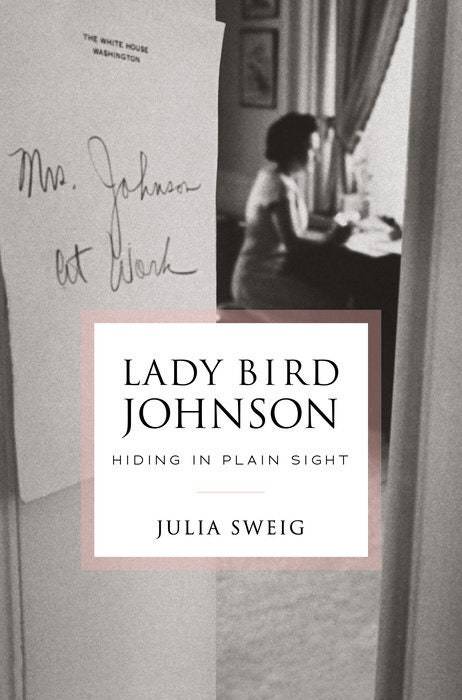
View On WordPress
0 notes
Text
Film Diary (July 12, 2020 - Dec 28, 2020)
JULY
July 12, 2020: KNIVES OUT (Dir. Rian Johnson)
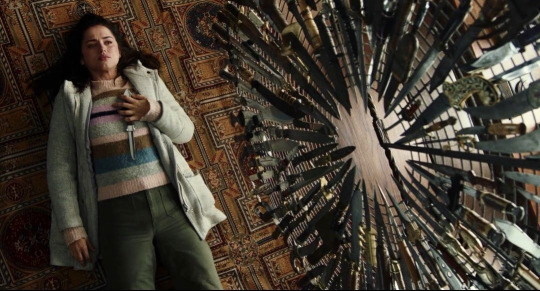
We get to see Rian Johnson finely tune his craft in real time, and I find it exciting. I’ve been on a binge of his work as-of-late and a recurring theme of most of his movies is them being a commentary on themselves or the genres they’re working within. I think this movie nails that trick on the head without patting itself on the back too much. The ensemble cast is expertly chosen and works together really well, and you can tell just by watching it that they were having fun on set. The cast is grounded by Ana de Armas’ quietly brilliant performance. My favorite Rian Johnson movie is still reserved for Star Wars: The Last Jedi, but I do think this is his best work so far.
July 13, 2020: MERMAIDS (Dir. Richard Benjamin)
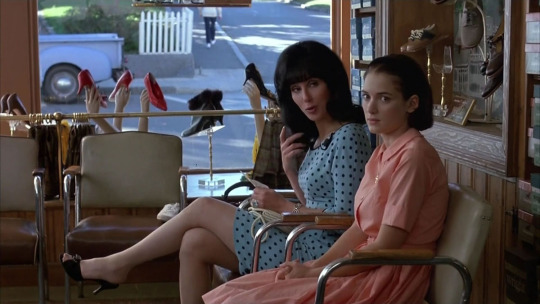
A slightly more absurd version of Lady Bird, if Lady Bird was made in the nineties. A good addition to the strained-but-loving mother-daughter relationship cinematic universe.
July 15, 2020: THE UNTOUCHABLES (Dir. Brian De Palma)
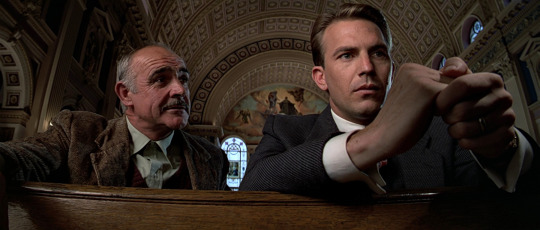
This is actually the first mafia movie I’ve ever seen, and honestly...it was probably a bad one to start with. Although it was entertaining and tense at all the right moments, the whole thing just felt empty. Every character seemed half-baked and none of them really had any development. De Palma could’ve gone grittier for an R-rating and made his interpretation of Al Capone a little less cartoonish; Kevin Costner’s Eliot Ness was doing the absolute least, and Robert De Niro’s Al Capone was doing the absolute most.
July 31, 2020: (500) DAYS OF SUMMER (Dir. Marc Webb)
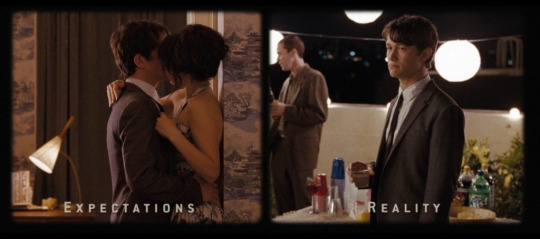
For some reason I have unintentionally seen almost all of Marc Webb’s filmography, and I have to say that I’m underwhelmed by all of it. While watching I found myself reflexively comparing this to Webb’s The Amazing Spiderman and maybe it ruined my viewing experience a little bit. Both of them have lots of super mumbly, drawn-out conversations and an interpretation of an “indie” style that just seems...bland to me. (Also, both of them have pale women with bangs and men with undiagnosed depression.) I don’t know, I just feel like if you want a rom-com with a realistic depiction of romantic relationships, you should just go watch The Big Sick.
AUGUST
August 14, 2020: LATE NIGHT (Dir. Nisha Ganatra)
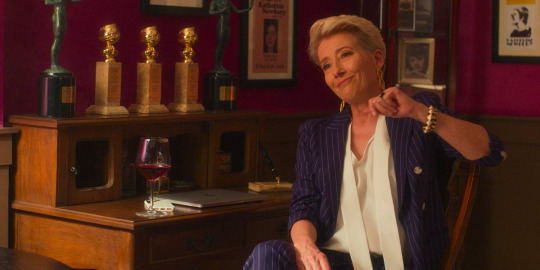
Emma Thompson was great in this, and I think Mindy Kaling is very underrated as a writer (in some ways, I think she is the modern Nora Ephron). I’ve seen quite a few reviews claiming that this movie plays along with conventions, but I don’t necessarily think that conventions are inherently bad as long as they’re executed well. In this case, they were.
August 22, 2020: THE FAREWELL (Dir. Lulu Wang)
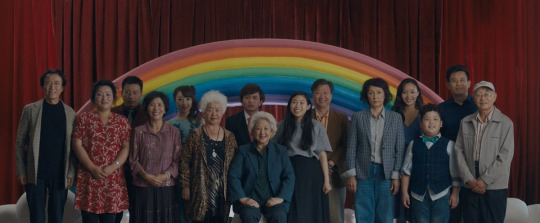
I’d classify this as a really good movie that just didn’t click with me. It was a complete, “it’s not them, it’s me,” situation. It was smartly directed with a focused, sharp script and an excellent leading performance from Awkwafina - I can see why people were upset that it got snubbed at the Oscars - but it just wasn’t my thing. The only time I really connected with it emotionally was the ending.
August 22, 2020: KNOCK DOWN THE HOUSE (Dir. Rachel Lears)

The only piece of media currently in existence that somehow makes me feel a sense of patriotism for this hellscape of a country.
SEPTEMBER
September 5, 2020: BARRY (Dir. Vikram Gandhi)
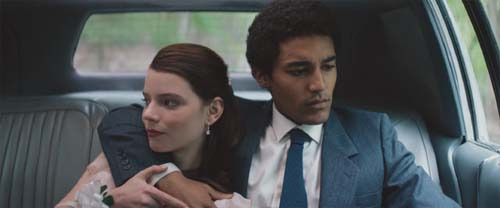
Speaking of living in a hellscape of a country, I have mixed feelings about the Obama presidency - but this movie isn’t about his presidency. It isn’t indicative that he’ll be president at any point. It’s essentially a piece of historical fiction about race and American identity that happens to use Barack Obama as its protagonist. You could replace him with any other dude with a background similar to his and it still would’ve been interesting.
September 8, 2020: UNICORN STORE (Dir. Brie Larson)
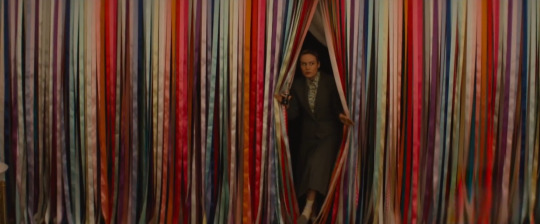
If there’s one word to describe this movie, I’d say, it’s cute. Not in a patronizing type of way, but in a this-movie-feels-like-a-warm-hug type of way. I like this Brie Larson vehicle much more than Captain Marvel, mainly because I feel like she’s having more fun in this and she gets to wear more colors and Samuel L. Jackson has tinsel in his hair and also there’s a unicorn in it. I’m a simple girl with simple needs. I also think Samuel L. Jackson should be adorned in tinsel in every film he’s in without explanation (I might actually watch Pulp Fiction if Jackson’s character had a sparkly afro in it). This movie also made me stan Mamoudou Athie - I think he plays a good straight man and I hope that they don’t waste him in Jurassic World: Dominion, although I’m not getting my hopes up.
September 11, 2020: LADY BIRD (Dir. Greta Gerwig)
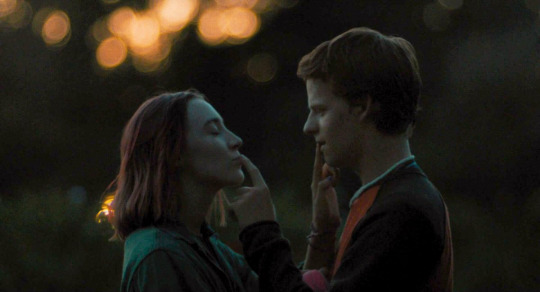
I waited a criminally long amount of time to finally watch this. I can’t really say anything about this movie that hasn’t already been said. It’s good! It’s genuine and sweet and I liked seeing Timothée Chalamet play a pretentious asshole.
September 12, 2020: THE BROTHERS BLOOM (Dir. Rian Johnson)
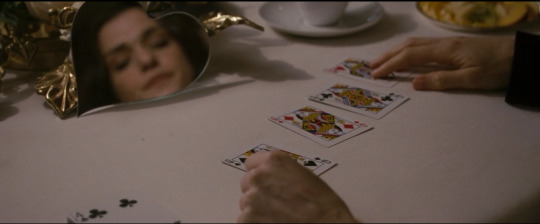
Upon a rewatch, I’m taking my original score of 3.5 out of 5 and bumping it up to a 4 out of 5. Adrian Brody and Rachel Weisz’s performances pretty much make this movie with their earnestness and chemistry. I think you could qualify this film as a romantic dramedy that just happens to be about an international con job. It doesn’t do the greatest job of explaining itself plot-wise, but it makes up for it with stylish direction and a charming cast.
September 18, 2020: EVER AFTER (Dir. Andy Tennant)
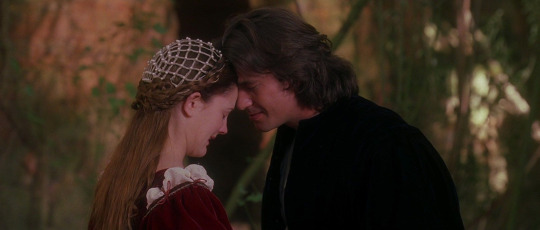
The best Cinderella adaptation currently in existence (next to Nickelodeon’s Rags starring Keke Palmer, of course). It’s so good that I’m willing to forgive Drew Barrymore’s attempt at a British accent. I also think this is one of the few movies that could be a decent remake if you gave it to the right director.
September 19, 2020: BRICK (Dir. Rian Johnson)
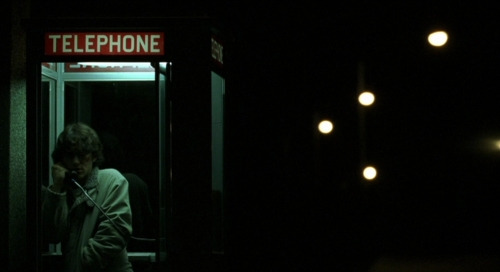
I love Rian Johnson, I think we’ve established that already, but I kind of sort of hated his film debut. It seemed so caught up in its own concept that it ended up seeming like a shell of a movie with no theme to ground it. Sometimes I don’t care if movie has no theme if it’s entertaining, but this movie was not entertaining, so...
September 25, 2020: ABOUT LAST NIGHT... (Dir. Edward Zwick)
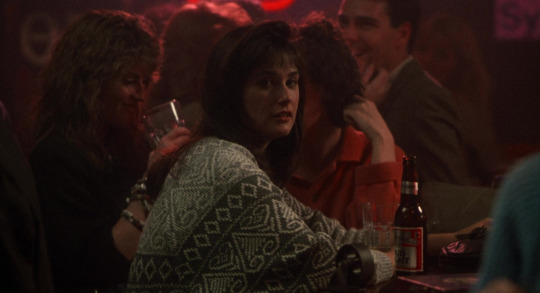
Alternate title: Toxic Man is Horrible to a Woman Who Literally Does Nothing Wrong Ever and Also is Gorgeous, They Break Up, Toxic Man Gets a Different Job and Toxicity is Gone Now, Like His Personality was Sifted Through a Brita Water Filter, then the Toxic Man Gets an Unearned Happy Ending with Gorgeous Woman. It might be a little bit long, but at least people would know what they were in for. Still better than (500) Days of Summer, although every male character in About Last Night... deserves to be in jail. All of Demi Moore’s sweaters get five stars.
OCTOBER
October 3, 2020: ENOLA HOLMES (Dir. Harry Bradbeer)
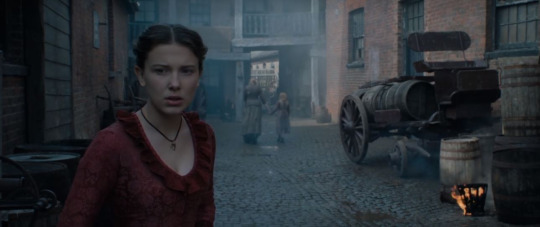
During the first draft of this post, I gave this movie a pretty good review. Then I rewatched it, and...huh. It’s not exactly a bad movie, it’s just an aggressively average movie. Enola Holmes would have benefited from a) a shorter runtime, b) a better mystery, and c) a weirder style. I think that if the character is going to repeatedly talk into the camera, which is kinda weird, you should just make everything else weird too. Give it a Birds of Prey-esque unreliable narrator and non-linear storyline. It’s still a fun movie, and the inevitable sequels have potential, but it just felt like they could’ve - I don’t know - made more of an effort?
October 10, 2020: HUNT FOR THE WILDERPEOPLE (Dir. Taika Waititi)
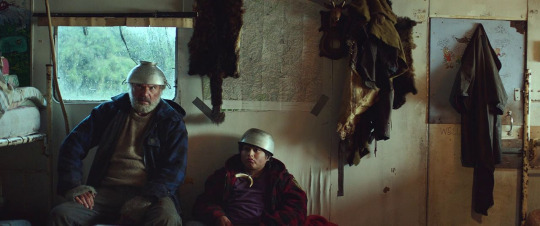
This is the first Taika Waititi movie I’ve seen besides Thor: Ragnarok. I liked seeing how his style transferred into Ragnarok, and it probably has the funniest funeral scene ever written (do yourself a favor and look it up on YouTube). Hunt for the Wilderpeople knows when to make a joke without getting too goofy, and it knows when to be sentimental without getting too sappy. It also has dozens of glorious one-liners.
October 11, 2020: LITTLE WOMEN (Dir. Greta Gerwig)
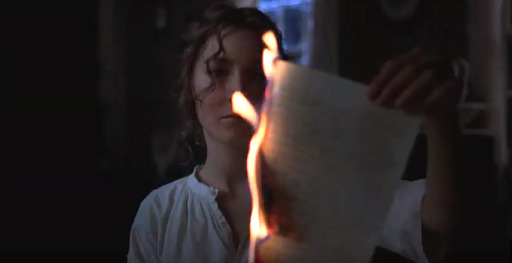
The best Little Women adaptation. (I haven’t seen the one with Katharine Hepburn but I’m just going to assume that this one’s better.) This movie was clearly made for people who know and love the story, which can be a good thing and a bad thing - it means that it took some creative liberties that enhanced the story and added subversions that made it feel meta in a satisfying way. But it also meant that it could be potentially confusing for people who aren’t familiar with the story. Personally I wasn’t lost, but I think Gerwig could’ve used some more visual cues to let you know when they were in the present or when they were diving into the past. I wouldn’t want her to eliminate the jumping back and forth, though, because I think it allowed the characters to be explored a lot more than a linear story would’ve allowed. Gerwig also did a great job of letting you understand the motivations of the supporting characters - specifically Amy - in a way that prior adaptations never really did. Every character felt like their own person instead of accessories to Jo’s life.
October 16, 2020: THE TRIAL OF THE CHICAGO 7 (Dir. Aaron Sorkin)
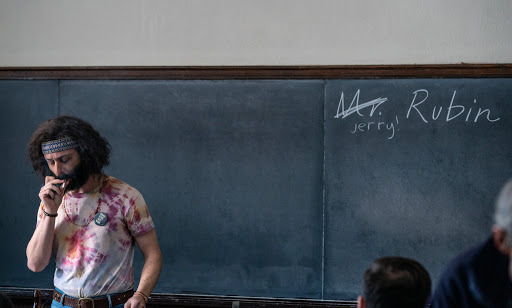
Siegel, a very good Letterboxd reviewer that I follow, said it better than I can: “Aaron Sorkin is way too good a writer to be forced to work with such a mediocre director as Aaron Sorkin”. I didn’t mind the beginning - I thought the quick editing, upbeat music, and cuts back and forth between historical footage and fictionalized scenes were engaging, but the ending was clunky and didn’t fit the tone of the rest of the film. The Trial of the Chicago 7 was a little confused politically and wanted to desperately cling onto a centrism that didn’t let the film fully embrace the anger that it could’ve ended on. Despite all of these things, I still thoroughly enjoyed it. The performances were all excellent, and if any of them get nominated for an Oscar it’s well-deserved. I’m also a sucker for Aaron Sorkin’s speechy, tangential dialogue. It makes me feel smart whenever I listen to it.
October 20, 2020: HALLOWEENTOWN (Dir. Duwayne Dunham)
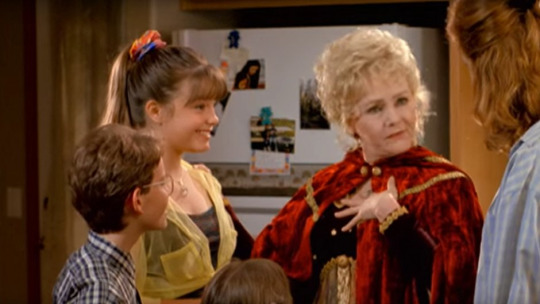
This movie does it for the girls and the gays, that’s it.
October 26, 2020: BIRDS OF PREY (AND THE FANTABULOUS EMANCIPATION OF ONE HARLEY QUINN) (Dir. Cathy Yan)
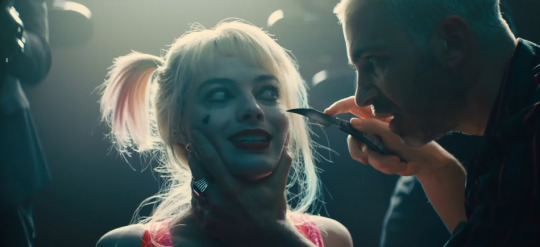
This movie also does it for the girls and the gays, that’s it. Seriously, I honestly don’t know why people don’t love this movie. Margot Robbie’s performance as Harley Quinn is Oscar-worthy. That’s not a joke. I actually think that if the Oscars knew how to have fun, she would get a nomination. She is this character. It feels so lived-in and she never does too much - and with a role like Harley Quinn, it would be very easy to do too much. I also have to give props to the type of feminism that director Cathy Yan inserted into this film. I really enjoyed Wonder Woman and didn’t mind Captain Marvel, but there was something so formulaic and studio-approved about the female empowerment in both of those films. Birds of Prey, however, didn’t really give a single fuck. It was a nuanced, violent, funny as hell story about flawed women forming alliances and finding meaningful relationships in a world that actively abuses them and ugh, I love this movie. It’s probably my personal favorite of the year.
October 27, 2020: DOLLY PARTON: HERE I AM (Dir. Francis Whately)
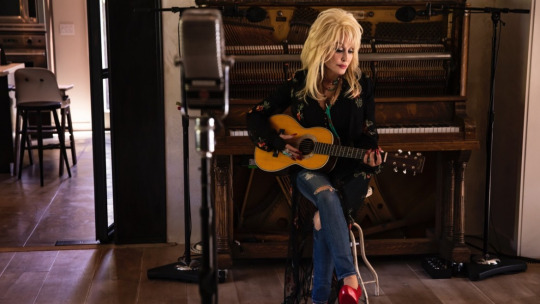
This documentary was strangely edited and offered pretty surface-level information presented in an uninteresting way. I enjoyed myself while I was watching it, but I just wish it would’ve gone deeper. Dolly Parton is one of the most interesting figures in music history, and there was a lot more they could’ve explored.
NOVEMBER
November 1, 2020: ATTACK THE BLOCK (Dir. Joe Cornish)
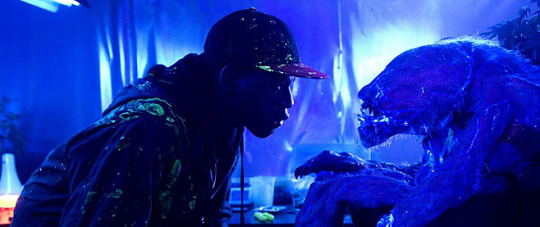
This 82-minute movie gave John Boyega a more satisfactory arc than the almost seven hour long Star Wars sequel trilogy. Seriously, this movie fucking slaps! It hit all the right notes at all the right moments. I honestly think that a lot of sci-fi movies would be better if they worked with smaller budgets and shorter runtimes. Something about working within limitations makes a film feel more authentic and cuts out a lot of the excess fat. This movie is funny and earnest and surprisingly has a lot to say about the world we live in, with a budget that’s 200 million dollars less and a runtime that's 45 minutes less than a lot of sci-fi movies out there.
November 18, 2020: A PRINCESS FOR CHRISTMAS (Dir. Michael Damian)
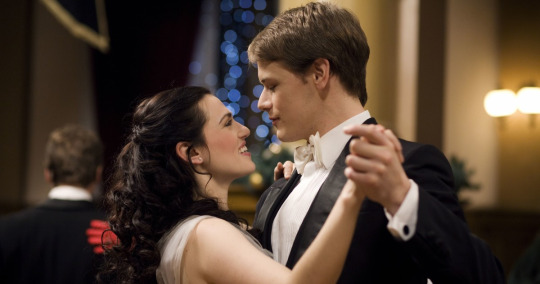
*Lady Gaga voice* Amazing, show-stopping, spectacular, never the same, totally unique, completely-not-ever-been-done-before... My go-to shitty Hallmark Christmas movie every year :)
November 19, 2020: THE LEGO STAR WARS HOLIDAY SPECIAL (Dir. Ken Cunningham)

I’m giving this a five-star rating completely unironically. This movie uses the mechanism of time travel better than Avengers: Endgame.
November 20, 2020: THE CHRISTMAS CHRONICLES (Dir. Clay Kaytis)
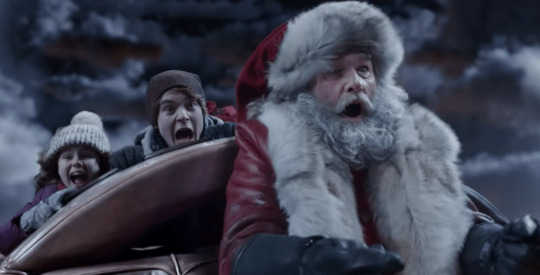
There’s a scene where Kurt Russel does a musical number in a jail cell and then Winston from “New Girl” quits his job as a cop. What more could you want from a Christmas movie?
November 21, 2020: INSIDE LLEWYN DAVIS (Dir. Joel & Ethan Coen)
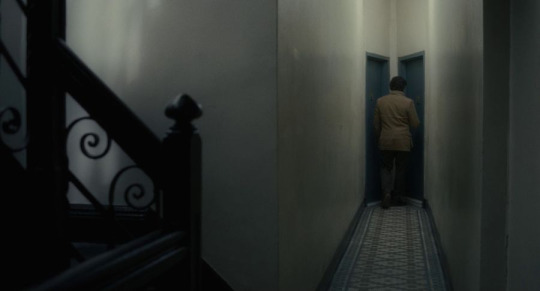
What was originally intended to be an Oscar Isaac thirst watch turned into what might end up being one of my favorite movies of all time. It’s one of those movies where it’s hard to articulate why it was so good, it was just good, but for the sake of this post I’ll try my best. Oscar Isaac was phenomenal in this - and I’m not just saying that because I’m a simp. His performance, combined with the script, made you root for his character even if he was a douchebag a lot of the time. The movie did a great job of blurring the line between what Llewyn Davis brought on himself and what was the result of just really, really bad luck. The use of sound in Llewyn Davis is excellent, too. Instead of using an instrumental score to emphasize emotion, they used sounds from the character’s environment, which really let the occasional musical moments pop - whenever anyone started singing, it almost felt cathartic. The Coen Brothers also provided moments of levity with perfectly-timed comedic moments throughout. It’s one of those movies where at the end of it, you’re kind of jealous that someone could make something that good. The fact that Oscar Isaac didn’t even get an Oscar nomination for this is - not to be dramatic - a fucking war crime.
November 22, 2020: STAR WARS: THE LAST JEDI (Dir. Rian Johnson)

Listen, I know The Last Jedi is such a hotly debated movie that it’s almost political, but it happens to be my favorite movie of all time. Like, number one. It even beats A Princess for Christmas. I’ve had my fair share of slander for loving this movie so damn much, but I will defend it until the day I die, and then I will have my tombstone engraved with “Luke Skywalker’s portrayal in this movie makes sense, you guys are just poisoned by nostalgia.” I’ve seen this movie several times, but I actually haven’t given it a rewatch since The Rise of Skywalker came out last December, and it still holds up. There’s a couple of things that I really appreciated a bit more this time around: every shot in this movie seems so intentional and emotionally charged. Pause it at any point and you’re going to have something interesting and aesthetically pleasing to look at. I really enjoyed the dialogue, too. In most of his movies, Rian Johnson makes his characters talk in a slightly heightened (or in Brick's case, very heightened) way, and it lends well to the Star Wars universe. I'm never going to to not gush about this film. The Last Jedi is the movie that made me love movies, and for that I will always be grateful.
November 25, 2020: HAPPIEST SEASON (Dir. Clea DuVall)

I have similar feelings toward this movie as I did toward Crazy Rich Asians; it follows most of the conventions that populate the rom-com genre, but for the marginalized people the movie is representing, it’s actually pretty fresh. Hot take, but I don’t think that Kristen Stewart’s character should’ve ended up with Aubrey Plaza’s character - I just think the film could’ve done a better job of empathizing with Mackenzie Davis’s character. If we focused on her perspective a bit more, maybe she would’ve seemed less...shitty and distant. I’d also appreciate it if we just stop doing the Gay Best Friend Trope after this movie because - let’s be honest with ourselves - no one’s going to be able to top Daniel Levy’s rendition of it.
November 29, 2020: MANGROVE (Dir. Steve McQueen)
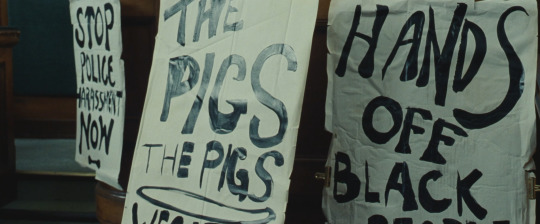
See my Mangrove review here.
DECEMBER
December 5, 2020: RED, WHITE AND BLUE (Dir. Steve McQueen)
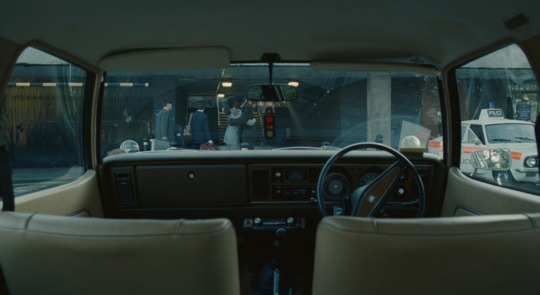
I may need to give this a rewatch at some point, mainly because it seems like I didn’t fully grasp the themes it was conveying due to my own skepticisms going into it. Here’s my original review.
December 13, 2020: THE PROM (Dir. Ryan Murphy)

I really can’t critically engage with this movie because my brain just turns off the minute the first song starts. Most of the criticisms you’ve heard are valid - though perhaps a little bit blown out of proportion - but it’s so much damn fun. I’ve watched it twice now.
December 19, 2020: MA RAINEY’S BLACK BOTTOM (Dir. George C. Wolfe)
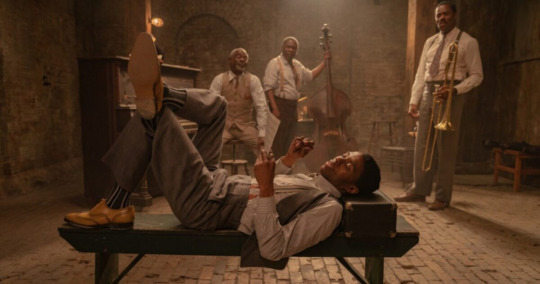
Chadwick Boseman’s last performance is haunting, transformative, and magnetic. The same can be said about Viola Davis’ performance, which is a surprise to no one, but this is really Chadwick’s vehicle. I just wish the directing was as interesting as the acting. This film was adapted from an August Wilson play, and directorially it was treated like a play, which doesn’t necessarily translate that well to film. The space around the actors wasn’t really utilized, and the way it was shot was pretty lackluster and static; oftentimes, the only interesting thing to look at in a scene was an actor’s performance. Maybe I’ve just been a little obsessed with Steve McQueen’s directing style lately, but this movie probably would’ve been five stars for me (instead of the four-and-a-half I gave it) if it was directed by him.
December 19, 2020: LONG TOAST (Dir. Karsten Runquist)
youtube
Fuck yeah, Karsten Runquist! Shout out to his monthly “what I watched in [insert month]” videos for giving me the inspiration to write this.
December 23, 2020: LET IT SNOW (Dir. Luke Snellin)
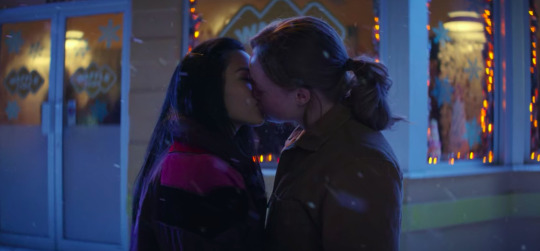
Weirdly enough, this may be one of my favorite Christmas movies. There’s nothing all that remarkable about it, but it has a sweet, simple holiday vibe with innocent performances and low stakes. I don’t really ask a lot for Christmas movies, and this pretty much delivers.
December 25, 2020: THE PSYCHOLOGY OF DREAM ANALYSIS (Dir. Rian Johnson)
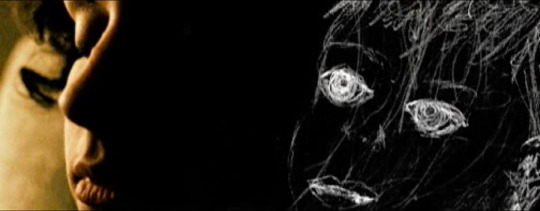
This short film from Rian Johnson is the earliest thing I could find of his filmography on Letterboxd, and it was a pretty engaging watch. It was essentially all of Johnson’s quirks as a director condensed into ten minutes. It reminded me of those trippy short stories you had to read in middle school.
December 26, 2020: PLUS ONE (Dir. Jeff Chan & Andrew Rhymer)
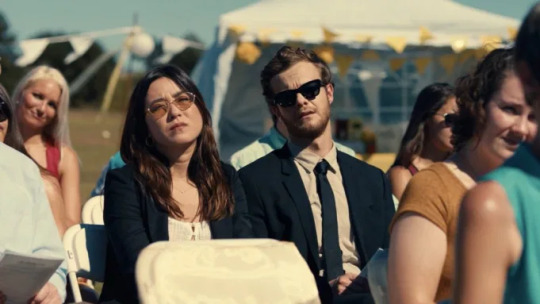
I’ve seen a lot of rom-coms - like, an ungodly amount - and my love-hate affair with this genre has made me realize that predictability isn’t the issue with rom-coms (a lot of genres are very, very predictable). The issue is a lack of authenticity. Yes, this film is predictable, but it’s authentic. The humor in this movie actually feels like something that would happen in real life, not something heavily contrived or exaggerated for the sake of entertainment. I don’t have anything against the contrived and exaggerated, but it’s refreshing to see comedy being delivered so naturally in this genre. Plus One also has a more realistic (but still sweet) perspective on love and relationships which you don’t normally see in any genre.
December 27, 2020: THE HALF OF IT (Dir. Alice Wu)
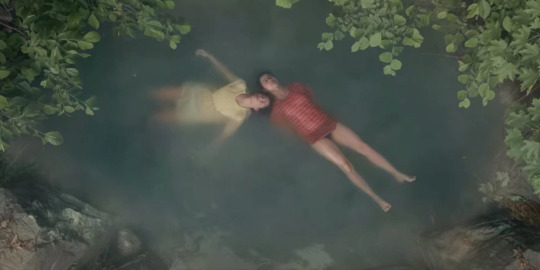
I watched this at the beginning of the year and didn’t enjoy it all that much - partly because I was in the closet and aaaah girls kissing aaaaaah - and partly because I just thought it was boring. On a second viewing, I really appreciated it more. I think it’s the smartest and most well-shot movie directed toward teens that I’ve seen on Netflix. Although the script can be a bit pretentious, it’s directed in a way that doesn’t feel like it’s either trying to be too indie or like an hour and fourty-five minute long single-camera sitcom episode. The character of Ellie is also a really interesting and nuanced character, and a good example of how to write and portray queerness on screen.
December 27, 2020: TAYLOR SWIFT - FOLKLORE: THE LONG POND STUDIO SESSIONS (Dir. Taylor Swift)
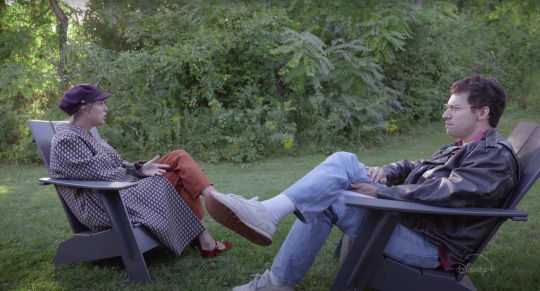
I would die for Taylor Swift and/or Jack Antonoff.
December 28, 2020: MANK (Dir. David Fincher)
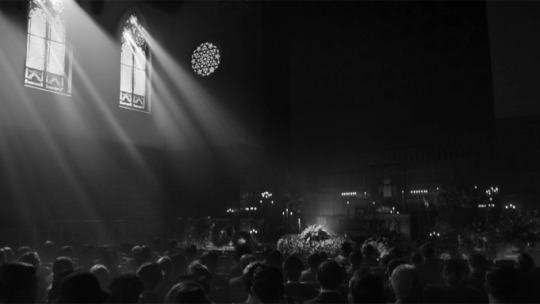
I went into this movie as a) someone who has never seen a David Fincher film, and b) someone who has never seen Citizen Kane. Unsurprisingly, Mank was definitely not my thing. That doesn’t mean I didn’t appreciate it. It’s a fucking good-looking movie. But it’s kind of like the himbo of movies - it’s nice to look at, but there’s not much going on underneath. I’m hearing this complaint from a lot of people: it’s a technical masterpiece, but it feels pretty damn hollow. Personally, it’s not enough for me to recognize that a film looks and sounds good - I have to care about and know the human beings within it in order for me to think that it’s a good movie. To me, a film is only as good as the emotional relevance of its story, but sadly emotional relevance is where Mank falls short.
What movies kept you sane during 2020? Let me know!
0 notes
Text
Beneficial Classic & Contemporary Design: Garden Conservancy Austin 2019
So, what does “drought tolerant” really mean?

Daphne tells us: “Plants that are ‘drought tolerant’ are able to withstand prolonged periods without rainfall or supplemental irrigation. But to do so, they may go into dormancy, similar to how they do in winter.” Trees drop leaves prematurely, or they brown or color up early, as they’re doing right now.

Get her complete answer and when to move citrus plants.
Native Lindheimer muhly, an ornamental clumping grass, was recently awarded Texas Superstar status for its performance across the state on a wide spectrum of climates and soils.

This deer-resistant grass—acclaimed for its showy foliage and fall blooms—is considered “drought tolerant,” according to Dr. Brent Pemberton of Texas A&M AgriLife Research, but requires irrigation when temperatures are elevated and rainfall is scarce.

At the same time, it’s a rain garden plant that helps stormwater infiltrate the soil, as does pink-hued Gulf muhly and low growing sedges. Find out more!

Looking for ideas with drought-tolerant, deer-resistant plants or stormwater control, rainwater collection, and outdoor living?

John Hart Asher from the Lady Bird Johnson Wildflower Center joins Designer Casey Boyter and Patrick MacRae from The Garden Conservancy to preview Austin’s Open Days November 2 tour that gathers designs from classic to contemporary.

Watch their tour preview now!
On tour with the “Berger Street” Open Days garden: Tucked into east Austin, Rita Little-Byrd and Keith Byrd’s diminutive house built in 1925 hasn’t changed its footprint; it just upped its romance and habitat highway.

Over 10 years, Keith worked on both home and garden, and built the cedar and metal post fence.

He remodeled a 1952 Royal Spartanette and shipping container in back for office and storage space.

When he and Rita decided to hold their wedding at home, Keith called on long-time friend Billy Spencer of Spencer Landscape Company to add the “icing on the cake.”

Shademaker Studio landscape architect Shaney Clemmons pulled together their ideas for welcoming outdoor living with contemporary flair and easy-care plants for wildlife.

Since an active, gregarious dog lives here, too, there’s lots of running room in back on zoysia grass and fence line patrol zones. All plants are non-toxic.

In the no-lawn front, Billy brought an elderly American ash to health for now, already underplanted with shade-loving crinum lilies, turk’s cap, and liriope.

Keith had spruced up the charming old fence. Billy moved a resident climbing rose to the brighter spot to greet the neighbors with flowers once again.

Keith framed the old, romantic arbor with a grapevine.

Shaney patterned Mexican adobe brick pathways for a low-glare, warm welcome and mud-free traffic from driveway to house and to the side yard.


The biggest change was Shaney’s front porch design with wide steps, perfect for sitting and chatting with this friendly neighborhood.



For a soothing, uncluttered entrance, they massed soft Berkeley sedge with Turk’s caps and other dappled-shade lovers.

In the narrow side yard, Keith’s stockpile of reclaimed bricks now wend a path against clusters of bamboo muhly and inland seaoats. Clustering plants makes a small space seem larger, more cohesive, and easier on maintenance.

The existing loquat tree invites wildlife with fall flowers and spring fruit. Rita and Keith gladly share the bounty with squirrels, birds, and butterflies.

A bevy of butterflies sailed around us, feeding on brick-warmed fallen fruits, including Question Mark and Red Admiral.
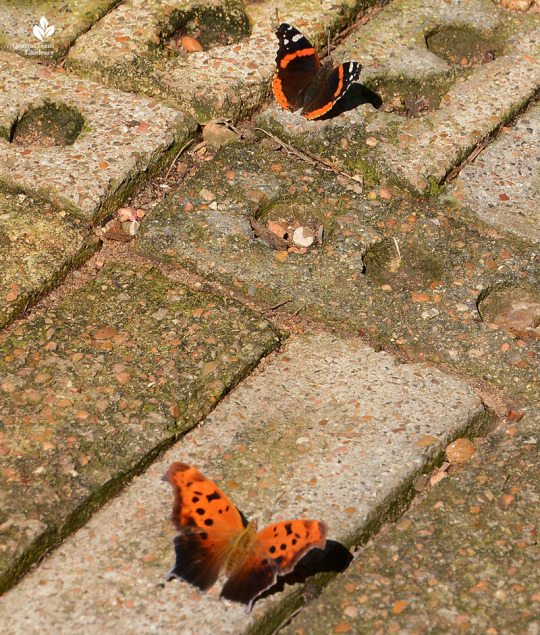
This Question Mark took a quick break.

The sunnier backyard supports Rita and Keith’s flowering native and adapted plants for wildlife. Spring-blooming anacacho orchid (Bauhinia lunarioides) frames the back porch.


Since the house is tiny, Keith extended their living room outside. He installed and renovated the Royal Spartanette and shipping container for office and storage space. Billy and Shaney polished it up with a limestone-edged frame and pea gravel floor that anchors the table/fire pit and chairs without any sinking.


Keith had already built the rock walls to gently frame the patio room.

He left room behind for a grilling or gardening work space, out of sight behind the shipping container. A planted a narrow leafy wall of progressively flowering shrubs and perennials to shield the fence.

Billy and Shaney designed a light-filled ceiling anchored rolled netting to posts of reclaimed oil pipe. Young evergreen star jasmine and Clematis armandii will shade the patio in a few years, scenting late spring with white flowers.

Rita and Keith’s wedding is October 19, 2019 (and looks like perfect weather!). But for them, every day’s a celebration with a daily guest list of wildlife.




Watch their story now!
youtube
And thanks for stopping by! See you next week, Linda
Beneficial Classic & Contemporary Design: Garden Conservancy Austin 2019 syndicated from https://yeuhoavn.wordpress.com/
0 notes
Text
Giving up the Ghost in Austin
Willie Nelson is credited with creating the current creative culture of Austin, Texas. (Photo by Karen Nelson)
As a child, ghosts terrified me. It didn’t help that my parents, both history teachers, dragged me to places like Colonial Williamsburg to tour endless old buildings whose halls were rumored to be haunted. Unbeknownst to me, standing in the majestic entryway of the iconic Driskill Hotel in Austin, Texas, absorbing the opulent décor and Lone Star State hospitality, like many historic landmarks, The Driskill has some ghost stories of its own.
Driskill Hotel in Austin, Texas, at sunset. (Photo by Kira Maclean)
Built by Colonel Jessie Driskill, a wealthy cattle baron, to the tune of $400,000 (the equivalent of $90 million today), The Driskill has been hosting the Governor’s Ball, international dignitaries, and tourists looking for a true Texas experience since its doors opened on the corner of Brazos and Pecan (now 6th Street) in 1886.
An aspiring Texas politician named Lyndon B. Johnson met his future wife Lady Bird for a breakfast date in The Driskill dining room, beginning a life-long love affair with each other and the hotel. Today’s guests can stay in the L.B.J. Presidential Suite and dine on dry-aged steak, locally sourced vegetables, and sip the signature TX Revolver whiskey drink at The Grill.
It’s hard to imagine Austin when the only points of interest were The Driskill, the State Capital, and the University of Texas. Today, Austin is the self-proclaimed “Live Music Capital of the World,” the home to Austin City Limits and the South By Southwest festival, and the place to go for music, barbeque, food trucks, and bats. Yes, bats.
Willie Nelson is credited with launching Austin’s current culture. As the story goes, in the late ‘60s, Austin was divided into three groups–cowboys, hippies, and politicians–and not surprisingly, they did not get along. But when Willie Nelson played at the Armadillo World Headquarters, it turned out all three groups liked Willie’s music, and he encouraged them to like each other.
Over 250 eclectic live music venues populate Austin, including the well-known Antone’s, Broken Spoke, the Continental Club, and the Mohawk. If you prefer the speakeasy vibe, make a reservation at Midnight Cowboy and enter through a secret door. Or on any given night you can do what I did, and stroll out The Driskill’s front door to one of 52 bars along 6th street, and choose the one with the best music pouring into the night. Just be sure you return to The Driskill for a decadent, late night dessert at the bar.
You can’t visit Texas and not eat barbeque. There is no better place than the woman-owned la Barbeque in East Austin. After operating a food truck for five years, LeAnn Mueller and Alison Clem opened up a brick-and-mortar restaurant. La Barbeque is a whimsical and unpretentious backyard affair. On weekends you might have to wait in line, but they encourage you to have a beer and make life-long friends with the people next to you. All natural and locally sourced, I recommend sampling everything, from the mouthwatering traditional brisket, inventive sausages, ribs and pulled pork, to the hearty sides of chipotle slaw, addictive shells and cheese, and house-made pickles, a spin on Muller’s grandma’s recipe.
Barbeque is a must when in Austin. (Photo by Karen Nelson)
Austin should also dub itself the “Food Truck Capital of the World.” There are over 2000 food trucks gathered in what Austinites call food trailer parks. Craft meats, cupcakes, churros, breakfast tacos, vegan, Brazilian, Venezuelan, Creole, if you can imagine it, there’s a truck serving it.
All this eating drove me to explore the trail along the shore of Lady Bird Lake and discover the Congress Avenue Bridge, home of the largest urban bat colony. It turns out that the crevices on the underside of the limestone bridge are the perfect place for the female Mexican free-tail bat to give birth. Over 750,000 pregnant mothers arrive in March, in June their babies are born, and by August the pups are ready to fly. Arrive twenty minutes before sundown to witness 1.5 million bats darken the sky.
Bats are not the only creatures of the Austin night. While on tour, singer Annie Lennox was a guest at The Driskill. Unsure what to wear for her performance, she laid out two dresses and hopped in the shower. When she emerged, one of her dresses had been rehung in the closet.
Personally, I could use some fashion advice next time I hit the town in cowboy boots, and The Driskill, with its historic charm, perfect location and top-notch cuisine, already has my return reservation. Ghosts be damned.
The famed 6th Street in Austin, Texas. (Photo by Kira Maclean)
Source Article
The post Giving up the Ghost in Austin appeared first on LUVLUV.
More Info At:: http://www.luvluv.net/giving-up-the-ghost-in-austin/
0 notes
Text
12 Uncommon Literary Devices to Give Your Writing Irresistible Style
So I bummed this book from a neighbor. It’s a book on classic English rhetoric. Or verbal style.
She initially pulled it off her shelf to show me because of the name of the author: Ward Farnsworth.
Not an exact rendering of my last name (it’s Farnworth, no “s”). And that’s not pretentious posturing on my part — it has been that way for generations.
But it didn’t really matter who wrote the book. I fell in love with it on the spot.
Each chapter is devoted to a literary device like anaphora, chiasmus, and litotes That may sound like nonsense to you, but they’re just fancy words for rhetorical devices you’ll quickly recognize.
Furthermore, each device is broken down into subspecies, complete with examples from notable sources like Shakespeare, Churchill, Chesterton, and the Bible (and I threw in a few by Tupac Shukar, Monty Python and the Holy Grail, and Bob Dylan).
What is a literary device?
Before diving into these uncommon literary devices, let’s take a quick detour.
Talking about literary devices, figures of speech and writing style can be intimidating for many.
After scouring the web and referring to a few additional books, I didn’t come across an agreed upon definition of literary devices. So here’s my take:
A literary device is a technique you can use to create a special effect on your writing.
Think about it this way.
When writing a story or making a point, you can just use the facts, which is totally fine for in some cases like journalism, or you can liven things up a bit with a literary device.
Here’s an example of a literary device to illustrate what I’m talking about:
“The rain was heavy this afternoon as I walked to my car.”
“The rain played tag with me as I ran to my car to get shelter.”
The first sentence is just a statement about the rain. It is what it is. It’s like a reporter sharing her observation about today’s weather, and it doesn’t lead the reader to think anything specific about the rain.
The second sentence basically says the same thing. To make the rain come alive (“The rain played tag”), I used a literary device known as personification to create an image in the mind of the reader. I mean, who hasn’t tried to run away from the rain?
Literary devices are tools writers can use that are similar to tactics producers can use in film, television, or theater. By adding makeup, using costumes, or utilizing computer graphics, producers can create special effects to convey a specific visual.
Here’s one example of before-and-after scenes using special effects:
Sure, the producer could have asked the actor to wear a costume or put on makeup. But you have to admit; the computer graphics really takes the look of this character to the next level.
This is really how literary devices work in their basic form. They can add special effects to your writing and transform the experience of your readers.
Why literary devices are essential to web writing
There’s a lot of good substance out there. Hardly any style, though. This isn’t an accident.
Most people who peddle content are tradespeople first, writers second. In other words, their authority rests in a discipline other than writing.
Sometimes their content feels as if it’s meant to feed a machine when the creator will tell you plainly that is not the case. They are writing for people, which is one key to writing a blog post people will actually read.
Fair enough. But technical writers also write for people.
A list of literary devices to add style to your content
I look at some pieces, though, and I think the designer probably got paid really good money. The writer, not so much.
This is not to say style should be a pretentious exercise in drawing attention to itself. It should not be a navel-gazing sentence by James Joyce or a long-winded, baroque one from Faulkner (whom I adore).
Great web writing demands the plainness of Hemingway and the clarity of Orwell and the playfulness of E. E. Cummings. And you can do it while honoring the simplicity of Strunk.
And mastering these 12 uncommon literary devices from Mr. Farnsworth’s book is a great place to start if you are a greenhorn … a great place to beef up your skill set if you are a veteran. Enjoy.
1. Epizeuxis
Epizeuxis is a simple repetition of words and phrases. This literary device is often used for emphasis, and oftentimes, there are no additional words in between. The quick repetition of words or phrases will arrest the attention of your readers.
Epizeuxis examples:
“Holy, holy, holy is the Lord of hosts; the whole earth is full of his glory!”
Isaiah 6:3
“Never give in — never, never, never, never, in nothing great or small, large or petty, never give in except to convictions of honour and good sense. Never yield to force; never yield to the apparently overwhelming might of the enemy.”
Winston Churchill
“But you never know now do you now do you now do you.”
David Foster Wallace, Brief Interviews with Hideous Men
2. Anaphora
Anaphora is repetition at the beginning of successive statements. In writing or speeches, you can use this literary device to create an artistic effect, or you can repeat one phrase to weave together several points together.
Anaphora examples:
Mad world! Mad kings! Mad composition!
William Shakespeare, King John, II
But woe unto you, scribes and Pharisees, hypocrites! for ye shut up the kingdom of heaven against men: for ye neither go in yourselves, neither suffer ye them that are entering to go in.
Woe unto you, scribes and Pharisees, hypocrites! for ye devour widows’ houses, and for a pretense make long prayer: therefore ye shall receive the greater damnation.
Woe unto you, scribes and Pharisees, hypocrites! for ye compass sea and land to make one proselyte, and when he is made, ye make him twofold more the child of hell than yourselves.
Woe unto you, ye blind guides, which say, Whosoever shall swear by the temple, it is nothing; but whosoever shall swear by the gold of the temple, he is a debtor!
Matthew 23:13-16
3. Epistrophe
Epistrophe is similar to anaphora, but with a twist—this literary device uses repetition of words or phrases at the end.
Epistrophe examples:
When I was a child, I spoke as a child, I understood as a child, I thought as a child.
1 Corinthians 13:11 (King James Translation)
“What lies behind us and what lies before us are tiny compared to what lies within us.”
Ralph Waldo Emerson
“There is no Negro problem. There is no Southern problem. There is no Northern problem. There is only an American problem.”
Lyndon B. Johnson in “We Shall Overcome”
4. Anadiplosis
Abnadiplosis is the repetition of a word or phrase at the beginning and end of a sentence. This literary device creates a sweet flow in certain forms of writing.
Abnadiplosis examples:
“Fear leads to anger. Anger leads to hate. Hate leads to suffering.”
Yoda, Star Wars
“We also rejoice in our sufferings, because we know that suffering produces perseverance; perseverance, character; and character, hope. And hope does not disappoint us.”
Romans 5:3–5
“The frog was a prince / The prince was a brick / The brick was an egg / The egg was a bird”
Genesis, “Supper’s Ready”
5. Polyptoton
Polyptoton is unique in that it’s a repetition of the root word. For example, you can use similar words like “strength” and “strong” instead of just repeating the same word.
Polyptoton examples:
“It is the same with all the powerful of to-day; it is the same, for instance, with the high-placed and high-paid official. Not only is the judge not judicial, but the arbiter is not even arbitrary.”
— G.K. Chesterton, The Man on Top
“Judge not, that ye be not judged.”
Matthew 7:1
“Not as a call to battle, though embattled we are.”
John F. Kennedy, Inaugural Address, January 20, 1961
“Absolute power corrupts absolutely.”
Lord Acton
6. Isocolon
Isocolon is a literary device you can use to create parallel structures in your length and rhythm.
Isocolon examples:
“Melts in your mouth, not in your hands.”
M&Ms
“With malice toward none, with charity toward all, with firmness in the right…”
Abraham Lincoln, Second Inaugural Address
“I’m a Pepper, he’s a Pepper, she’s a Pepper, we’re a Pepper — Wouldn’t you like to be a Pepper, too? Dr. Pepper!”
Dr. Pepper advertising jingle
“Heal the sick, cleanse the lepers, raise the dead, cast out devils: freely ye have received, freely give.”
Matthew 10:8
7. Chiasmus
Chiasmus is a reversal structure used for artistic effect. With this literary device, you basically criss-cross phrases to convey a similar—not identical—meaning.
Chiasmus examples:
“Mankind must put an end to war or war will put an end to mankind.”
John F. Kennedy
“Woe unto that call evil good, and good evil; that put darkness for light, and light for darkness; that put bitter for sweet, and sweet for bitter!”
Isaiah 5:20
“They say money don’t make the man but man, I’m makin’ money.”
Tupac Shakur, “Thug Passion”
8. Anastrophe
Anastrope refers to an inversion of words, which will make perfect sense in a moment (assuming your a fan of Star Wars). You can use this literary device to emphasize a word or phrase.
Anastrope examples:
” Deep into that darkness peering, long I stood there wondering, fearing.”
Edgar Allan Poe, “The Raven”
“Joined the Dark Side, Dooku has. Lies, deceit, creating mistrust are his ways now.”
Yoda
“I sing of arms and the man, who first from the shores of Troy.”
Virgil, the first line of Aeneid
“Never have I found the limits of the photographic potential. Every horizon, upon being reached, reveals another beckoning in the distance”
Eugene Smith
“Her mother is the lady of the house, And a good lady, and wise and virtuous. I nursed her daughter that you talked withal. I tell you, he that can lay hold of her, Shall have the chinks.”
Shakespeare, Romeo and Juliet
9. Polysyndeton
Polysyndeto is a literary device where you use extra conjunctions (e.g., and, but)—frequently in quick succession—to create a stylistic effect.
Polysyndeton examples:
“And every living substance was destroyed which was upon the face of the ground, both man, and cattle, and the creeping things, and the fowl of the heaven; and they were destroyed from the earth: and Noah only remained alive, and they that were with him in the ark.”
Genesis 7:3
“If there be cords, or knives, or poison, or fire, or suffocating streams, I’ll not endure it”
Shakespeare, Othello
“And St. Attila raised his hand grenade up on high saying ‘O Lord bless this thy hand grenade that with it thou mayest blow thine enemies to tiny bits, in thy mercy. ‘and the Lord did grin and people did feast upon the lambs and sloths and carp and anchovies and orangutans and breakfast cereals and fruit bats and …'”
Monty Python and the Holy Grail
“I said, ‘Who killed him?’ and he said ‘I don’t know who killed him, but he’s dead all right,’ and it was dark and there was water standing in the street and no lights or windows broke and boats all up in the town and trees blown down and everything all blown and I got a skiff and went out and found my boat where I had her inside Mango Key and she was right only she was full of water.”
Ernest Hemingway, “After the Storm.”
10. Asyndeton
Asyndeton is a writing style where you leave out conjunctions to write direct statements for effect. If used correctly, this literary device can create a beautiful, memorable rhythm in your writing.
Asyndeton examples:
“We shall go on to the end, we shall fight in France, we shall fight on the seas and oceans, we shall fight with growing confidence and growing strength in the air, we shall defend our Island, whatever the cost may be, we shall fight on the beaches, we shall fight on the landing grounds, we shall fight in the fields and in the streets, we shall fight in the hills; we shall never surrender. . .”
Winston Churchill, “We Shall Fight on the Beaches”
“…and that government of the people, by the people, for the people shall not perish from the earth.”
Abraham Lincoln, Gettysburg Address
“That we shall pay any price, bear any burden, meet any hardship, support any friend, oppose any foe to assure the survival and the success of liberty.”
John F. Kennedy, Inaugural Address
“And whatsoever mine eyes desired I kept not from them, I withheld not my heart from any joy; for my heart rejoiced in all my labour: and this was my portion of all my labour.”
Ecclesiastes 2:10
11. Litotes
Litotes is a figure of speech you can use to affirm something positive by making an understatement. After you take a gander at the examples below, you’ll see that this literary device is commonly used in everyday conversations and popular literature.
Litotes examples:
“Not bad” (to say something is good)
“He’s not as young as he used to be” (meaning “he’s old”)
“Keep an eye on your mother whom we both know doesn’t have both oars in the water.”
Jim Harrison, The Road Home
“I will multiply them, and they shall not be few; I will make them honored, and they shall not be small.”
Jeremiah 30:19
“Are you also aware, Mrs. Bueller, that Ferris does not have what we consider to be an exemplary attendance record?”
Ferris Bueller’s Day Off
12. Hypophora
In short, hypophora is when you ask a question and then answer the question you just asked. Unlike a rhetorical question, to use this literary device, you’ll need to answer the question you pose immediately.
Hypophora examples:
“What made me take this trip to Africa? There is no quick explanation. Things got worse and worse and worse and pretty soon they were too complicated.”
Saul Bellow, Henderson the Rain King
Are they Hebrews? So am I. Are they Israelites? So am I. Are they the seed of Abraham? So am I.
1 Corinthians 11:21-22
“Oh, what did you see, my blue-eyed son?
Oh, what did you see, my darling young one?
I saw a newborn baby with wild wolves all around it
I saw a highway of diamonds with nobody on it,
I saw a black branch with blood that kept drippin’,
I saw a room full of men with their hammers a-bleedin’,
I saw a white ladder all covered with water,
I saw ten thousand talkers whose tongues were all broken,
I saw guns and sharp swords in the hands of young children,
Bob Dylan, “A Hard Rain’s A-Gonna Fall.”
Another warning literary devices and style
I admit.
This could be an exercise in dilettantism. An argument for fashion over function. In the hard and fast competition found on a search results page, most people just want answers to their questions. They want substance over style. Function over fashion.
Fair enough.
That, however, is only true in a market that is not saturated. If you hobnob in an industry drowning in competitors, on the other hand, then substance alone is not enough. You need style — among other things — to stand out.
So, bookmark this post, then carve out some time to study these devices.
Question: How many of these devices did I use in this article?
The post 12 Uncommon Literary Devices to Give Your Writing Irresistible Style appeared first on Copybot.
from SEO Tips https://thecopybot.com/literary-devices-web-style/
0 notes
Photo


Lady Bird Johnson’s Brick House
Lady Bird Johnson was married to Lyndon Baines Johnson who became president after John F. Kennedy was assassinated in 1963. The Johnson’s were from Texas.
When she was first lady, Mrs. Johnson was known for her desire to beautify America. But her interest went beyond this. She was a strong advocate for conservation and historical preservation.
Her father, Thomas Jefferson Taylor and her mother, Minnie Patillo Taylor lived in the small town of Karnack located in east Texas. Mr. Taylor was a landowner and local merchant. He bought a stately mansion known as The Brick House in 1902.
Lady Bird was the Taylor’s third child and was born in the home.
Milt Andrews a Confederate Colonel, some sources state he was a Captain, had the mansion built in 1843. It was constructed of bricks made by slave hands.
The Brick House is a classic example of antebellum architecture. It has impressive brick columns and three brick fireplaces. Its balcony is 30 feet high. The mansion has four sets of double doors that lead to the home’s central hall. Access to the second story is via an exterior staircase only.
By the time the Taylors bought the home it was in sad need of repair. They undertook extensive renovations. The eccentric owner they bought the mansion from had left one room filled with hickory nuts.
Lady Bird’s mother died when she was four years old. Minnie tripped over the family’s collie in 1912 as she walked down the stairs. She was pregnant at the time and she miscarried. A few days later she died of septicemia.
Lady Bird was christened, Claudia Alta but her nurse, Alice Tittle stating the little girl was “as pretty as a lady bird” named her Lady Bird. This nickname stuck with her the rest of her life.
Lady Bird graduated from the University of Texas with a B.A. in Journalism. After her father died a Taylor relative donated 385 acres of the family estate in 1934. Today this section is a part of the Caddo Lake State Park.
The Taylor family still owns The Brick House and they keep it in pristine condition. Lady Bird’s former home is not only beautiful but it is also haunted.
A well-known legend states that a young girl was struck by lightning in the home and her ghost has haunted her bedroom ever since.
This young lady was the original owner, Milt Andrew’s daughter, Eunice. She went by the name Oonie. One day as she was sitting in her bedroom rocking chair during a storm in the 1860s a bolt of lightning rushed down the chimney and struck her—she was burned and died.
Since her death people say her spirit has never left this room. When the Taylors bought The Brick House her ghost came with it.
Lady Bird stated she never saw or heard this ghost but that every time she was in Oonie’s former bedroom as a little girl she became nervous. She felt something unseen was in the room with her.
Lady Bird said the servants often told her they saw Miss Oonie. They said this ghost was surrounded in light and was slight of build. She wore a white dress and her hair stood on end—the result of being hit by lightning.
In August of 1966, a newspaper article mentions Lady Bird’s brother Tony Taylor and this haunting. He states various family members did hear a woman sobbing in the mansion at night. They also heard creepy sounds of something moving about.
The Taylor family has taken this haunting in stride. For several generations they have felt this female ghost gives the home extra character. They refer to her as “a lady who lives in the house that nobody sees.”
15 notes
·
View notes
Text
12 Uncommon Literary Devices to Give Your Writing Irresistible Style
So I bummed this book from a neighbor. It’s a book on classic English rhetoric. Or verbal style.
She initially pulled it off her shelf to show me because of the name of the author: Ward Farnsworth.
Not an exact rendering of my last name (it’s Farnworth, no “s”). And that’s not pretentious posturing on my part — it has been that way for generations.
But it didn’t really matter who wrote the book. I fell in love with it on the spot.
Each chapter is devoted to a literary device like anaphora, chiasmus, and litotes That may sound like nonsense to you, but they’re just fancy words for rhetorical devices you’ll quickly recognize.
Furthermore, each device is broken down into subspecies, complete with examples from notable sources like Shakespeare, Churchill, Chesterton, and the Bible (and I threw in a few by Tupac Shukar, Monty Python and the Holy Grail, and Bob Dylan).
What is a literary device?
Before diving into these uncommon literary devices, let’s take a quick detour.
Talking about literary devices, figures of speech and writing style can be intimidating for many.
After scouring the web and referring to a few additional books, I didn’t come across an agreed upon definition of literary devices. So here’s my take:
A literary device is a technique you can use to create a special effect on your writing.
Think about it this way.
When writing a story or making a point, you can just use the facts, which is totally fine for in some cases like journalism, or you can liven things up a bit with a literary device.
Here’s an example of a literary device to illustrate what I’m talking about:
“The rain was heavy this afternoon as I walked to my car.”
“The rain played tag with me as I ran to my car to get shelter.”
The first sentence is just a statement about the rain. It is what it is. It’s like a reporter sharing her observation about today’s weather, and it doesn’t lead the reader to think anything specific about the rain.
The second sentence basically says the same thing. To make the rain come alive (“The rain played tag”), I used a literary device known as personification to create an image in the mind of the reader. I mean, who hasn’t tried to run away from the rain?
Literary devices are tools writers can use that are similar to tactics producers can use in film, television, or theater. By adding makeup, using costumes, or utilizing computer graphics, producers can create special effects to convey a specific visual.
Here’s one example of before-and-after scenes using special effects:
Sure, the producer could have asked the actor to wear a costume or put on makeup. But you have to admit; the computer graphics really takes the look of this character to the next level.
This is really how literary devices work in their basic form. They can add special effects to your writing and transform the experience of your readers.
Why literary devices are essential to web writing
There’s a lot of good substance out there. Hardly any style, though. This isn’t an accident.
Most people who peddle content are tradespeople first, writers second. In other words, their authority rests in a discipline other than writing.
Sometimes their content feels as if it’s meant to feed a machine when the creator will tell you plainly that is not the case. They are writing for people, which is one key to writing a blog post people will actually read.
Fair enough. But technical writers also write for people.
A list of literary devices to add style to your content
I look at some pieces, though, and I think the designer probably got paid really good money. The writer, not so much.
This is not to say style should be a pretentious exercise in drawing attention to itself. It should not be a navel-gazing sentence by James Joyce or a long-winded, baroque one from Faulkner (whom I adore).
Great web writing demands the plainness of Hemingway and the clarity of Orwell and the playfulness of E. E. Cummings. And you can do it while honoring the simplicity of Strunk.
And mastering these 12 uncommon literary devices from Mr. Farnsworth’s book is a great place to start if you are a greenhorn … a great place to beef up your skill set if you are a veteran. Enjoy.
1. Epizeuxis
Epizeuxis is a simple repetition of words and phrases. This literary device is often used for emphasis, and oftentimes, there are no additional words in between. The quick repetition of words or phrases will arrest the attention of your readers.
Epizeuxis examples:
“Holy, holy, holy is the Lord of hosts; the whole earth is full of his glory!”
Isaiah 6:3
“Never give in — never, never, never, never, in nothing great or small, large or petty, never give in except to convictions of honour and good sense. Never yield to force; never yield to the apparently overwhelming might of the enemy.”
Winston Churchill
“But you never know now do you now do you now do you.”
David Foster Wallace, Brief Interviews with Hideous Men
2. Anaphora
Anaphora is repetition at the beginning of successive statements. In writing or speeches, you can use this literary device to create an artistic effect, or you can repeat one phrase to weave together several points together.
Anaphora examples:
Mad world! Mad kings! Mad composition!
William Shakespeare, King John, II
But woe unto you, scribes and Pharisees, hypocrites! for ye shut up the kingdom of heaven against men: for ye neither go in yourselves, neither suffer ye them that are entering to go in.
Woe unto you, scribes and Pharisees, hypocrites! for ye devour widows’ houses, and for a pretense make long prayer: therefore ye shall receive the greater damnation.
Woe unto you, scribes and Pharisees, hypocrites! for ye compass sea and land to make one proselyte, and when he is made, ye make him twofold more the child of hell than yourselves.
Woe unto you, ye blind guides, which say, Whosoever shall swear by the temple, it is nothing; but whosoever shall swear by the gold of the temple, he is a debtor!
Matthew 23:13-16
3. Epistrophe
Epistrophe is similar to anaphora, but with a twist—this literary device uses repetition of words or phrases at the end.
Epistrophe examples:
When I was a child, I spoke as a child, I understood as a child, I thought as a child.
1 Corinthians 13:11 (King James Translation)
“What lies behind us and what lies before us are tiny compared to what lies within us.”
Ralph Waldo Emerson
“There is no Negro problem. There is no Southern problem. There is no Northern problem. There is only an American problem.”
Lyndon B. Johnson in “We Shall Overcome”
4. Anadiplosis
Abnadiplosis is the repetition of a word or phrase at the beginning and end of a sentence. This literary device creates a sweet flow in certain forms of writing.
Abnadiplosis examples:
“Fear leads to anger. Anger leads to hate. Hate leads to suffering.”
Yoda, Star Wars
“We also rejoice in our sufferings, because we know that suffering produces perseverance; perseverance, character; and character, hope. And hope does not disappoint us.”
Romans 5:3–5
“The frog was a prince / The prince was a brick / The brick was an egg / The egg was a bird”
Genesis, “Supper’s Ready”
5. Polyptoton
Polyptoton is unique in that it’s a repetition of the root word. For example, you can use similar words like “strength” and “strong” instead of just repeating the same word.
Polyptoton examples:
“It is the same with all the powerful of to-day; it is the same, for instance, with the high-placed and high-paid official. Not only is the judge not judicial, but the arbiter is not even arbitrary.”
— G.K. Chesterton, The Man on Top
“Judge not, that ye be not judged.”
Matthew 7:1
“Not as a call to battle, though embattled we are.”
John F. Kennedy, Inaugural Address, January 20, 1961
“Absolute power corrupts absolutely.”
Lord Acton
6. Isocolon
Isocolon is a literary device you can use to create parallel structures in your length and rhythm.
Isocolon examples:
“Melts in your mouth, not in your hands.”
M&Ms
“With malice toward none, with charity toward all, with firmness in the right…”
Abraham Lincoln, Second Inaugural Address
“I’m a Pepper, he’s a Pepper, she’s a Pepper, we’re a Pepper — Wouldn’t you like to be a Pepper, too? Dr. Pepper!”
Dr. Pepper advertising jingle
“Heal the sick, cleanse the lepers, raise the dead, cast out devils: freely ye have received, freely give.”
Matthew 10:8
7. Chiasmus
Chiasmus is a reversal structure used for artistic effect. With this literary device, you basically criss-cross phrases to convey a similar—not identical—meaning.
Chiasmus examples:
“Mankind must put an end to war or war will put an end to mankind.”
John F. Kennedy
“Woe unto that call evil good, and good evil; that put darkness for light, and light for darkness; that put bitter for sweet, and sweet for bitter!”
Isaiah 5:20
“They say money don’t make the man but man, I’m makin’ money.”
Tupac Shakur, “Thug Passion”
8. Anastrophe
Anastrope refers to an inversion of words, which will make perfect sense in a moment (assuming your a fan of Star Wars). You can use this literary device to emphasize a word or phrase.
Anastrope examples:
” Deep into that darkness peering, long I stood there wondering, fearing.”
Edgar Allan Poe, “The Raven”
“Joined the Dark Side, Dooku has. Lies, deceit, creating mistrust are his ways now.”
Yoda
“I sing of arms and the man, who first from the shores of Troy.”
Virgil, the first line of Aeneid
“Never have I found the limits of the photographic potential. Every horizon, upon being reached, reveals another beckoning in the distance”
Eugene Smith
“Her mother is the lady of the house, And a good lady, and wise and virtuous. I nursed her daughter that you talked withal. I tell you, he that can lay hold of her, Shall have the chinks.”
Shakespeare, Romeo and Juliet
9. Polysyndeton
Polysyndeto is a literary device where you use extra conjunctions (e.g., and, but)—frequently in quick succession—to create a stylistic effect.
Polysyndeton examples:
“And every living substance was destroyed which was upon the face of the ground, both man, and cattle, and the creeping things, and the fowl of the heaven; and they were destroyed from the earth: and Noah only remained alive, and they that were with him in the ark.”
Genesis 7:3
“If there be cords, or knives, or poison, or fire, or suffocating streams, I’ll not endure it”
Shakespeare, Othello
“And St. Attila raised his hand grenade up on high saying ‘O Lord bless this thy hand grenade that with it thou mayest blow thine enemies to tiny bits, in thy mercy. ‘and the Lord did grin and people did feast upon the lambs and sloths and carp and anchovies and orangutans and breakfast cereals and fruit bats and …'”
Monty Python and the Holy Grail
“I said, ‘Who killed him?’ and he said ‘I don’t know who killed him, but he’s dead all right,’ and it was dark and there was water standing in the street and no lights or windows broke and boats all up in the town and trees blown down and everything all blown and I got a skiff and went out and found my boat where I had her inside Mango Key and she was right only she was full of water.”
Ernest Hemingway, “After the Storm.”
10. Asyndeton
Asyndeton is a writing style where you leave out conjunctions to write direct statements for effect. If used correctly, this literary device can create a beautiful, memorable rhythm in your writing.
Asyndeton examples:
“We shall go on to the end, we shall fight in France, we shall fight on the seas and oceans, we shall fight with growing confidence and growing strength in the air, we shall defend our Island, whatever the cost may be, we shall fight on the beaches, we shall fight on the landing grounds, we shall fight in the fields and in the streets, we shall fight in the hills; we shall never surrender. . .”
Winston Churchill, “We Shall Fight on the Beaches”
“…and that government of the people, by the people, for the people shall not perish from the earth.”
Abraham Lincoln, Gettysburg Address
“That we shall pay any price, bear any burden, meet any hardship, support any friend, oppose any foe to assure the survival and the success of liberty.”
John F. Kennedy, Inaugural Address
“And whatsoever mine eyes desired I kept not from them, I withheld not my heart from any joy; for my heart rejoiced in all my labour: and this was my portion of all my labour.”
Ecclesiastes 2:10
11. Litotes
Litotes is a figure of speech you can use to affirm something positive by making an understatement. After you take a gander at the examples below, you’ll see that this literary device is commonly used in everyday conversations and popular literature.
Litotes examples:
“Not bad” (to say something is good)
“He’s not as young as he used to be” (meaning “he’s old”)
“Keep an eye on your mother whom we both know doesn’t have both oars in the water.”
Jim Harrison, The Road Home
“I will multiply them, and they shall not be few; I will make them honored, and they shall not be small.”
Jeremiah 30:19
“Are you also aware, Mrs. Bueller, that Ferris does not have what we consider to be an exemplary attendance record?”
Ferris Bueller’s Day Off
12. Hypophora
In short, hypophora is when you ask a question and then answer the question you just asked. Unlike a rhetorical question, to use this literary device, you’ll need to answer the question you pose immediately.
Hypophora examples:
“What made me take this trip to Africa? There is no quick explanation. Things got worse and worse and worse and pretty soon they were too complicated.”
Saul Bellow, Henderson the Rain King
Are they Hebrews? So am I. Are they Israelites? So am I. Are they the seed of Abraham? So am I.
1 Corinthians 11:21-22
“Oh, what did you see, my blue-eyed son?
Oh, what did you see, my darling young one?
I saw a newborn baby with wild wolves all around it
I saw a highway of diamonds with nobody on it,
I saw a black branch with blood that kept drippin’,
I saw a room full of men with their hammers a-bleedin’,
I saw a white ladder all covered with water,
I saw ten thousand talkers whose tongues were all broken,
I saw guns and sharp swords in the hands of young children,
Bob Dylan, “A Hard Rain’s A-Gonna Fall.”
Another warning literary devices and style
I admit.
This could be an exercise in dilettantism. An argument for fashion over function. In the hard and fast competition found on a search results page, most people just want answers to their questions. They want substance over style. Function over fashion.
Fair enough.
That, however, is only true in a market that is not saturated. If you hobnob in an industry drowning in competitors, on the other hand, then substance alone is not enough. You need style — among other things — to stand out.
So, bookmark this post, then carve out some time to study these devices.
Question: How many of these devices did I use in this article?
The post 12 Uncommon Literary Devices to Give Your Writing Irresistible Style appeared first on Copybot.
from Online Marketing Tips https://thecopybot.com/literary-devices-web-style/
0 notes
Text
12 Uncommon Literary Devices to Give Your Writing Irresistible Style
So I bummed this book from a neighbor. It’s a book on classic English rhetoric. Or verbal style.
She initially pulled it off her shelf to show me because of the name of the author: Ward Farnsworth.
Not an exact rendering of my last name (it’s Farnworth, no “s”). And that’s not pretentious posturing on my part — it has been that way for generations.
But it didn’t really matter who wrote the book. I fell in love with it on the spot.
Each chapter is devoted to a literary device like anaphora, chiasmus, and litotes That may sound like nonsense to you, but they’re just fancy words for rhetorical devices you’ll quickly recognize.
Furthermore, each device is broken down into subspecies, complete with examples from notable sources like Shakespeare, Churchill, Chesterton, and the Bible (and I threw in a few by Tupac Shukar, Monty Python and the Holy Grail, and Bob Dylan).
What is a literary device?
Before diving into these uncommon literary devices, let’s take a quick detour.
Talking about literary devices, figures of speech and writing style can be intimidating for many.
After scouring the web and referring to a few additional books, I didn’t come across an agreed upon definition of literary devices. So here’s my take:
A literary device is a technique you can use to create a special effect on your writing.
Think about it this way.
When writing a story or making a point, you can just use the facts, which is totally fine for in some cases like journalism, or you can liven things up a bit with a literary device.
Here’s an example of a literary device to illustrate what I’m talking about:
“The rain was heavy this afternoon as I walked to my car.”
“The rain played tag with me as I ran to my car to get shelter.”
The first sentence is just a statement about the rain. It is what it is. It’s like a reporter sharing her observation about today’s weather, and it doesn’t lead the reader to think anything specific about the rain.
The second sentence basically says the same thing. To make the rain come alive (“The rain played tag”), I used a literary device known as personification to create an image in the mind of the reader. I mean, who hasn’t tried to run away from the rain?
Literary devices are tools writers can use that are similar to tactics producers can use in film, television, or theater. By adding makeup, using costumes, or utilizing computer graphics, producers can create special effects to convey a specific visual.
Here’s one example of before-and-after scenes using special effects:
Sure, the producer could have asked the actor to wear a costume or put on makeup. But you have to admit; the computer graphics really takes the look of this character to the next level.
This is really how literary devices work in their basic form. They can add special effects to your writing and transform the experience of your readers.
Why literary devices are essential to web writing
There’s a lot of good substance out there. Hardly any style, though. This isn’t an accident.
Most people who peddle content are tradespeople first, writers second. In other words, their authority rests in a discipline other than writing.
Sometimes their content feels as if it’s meant to feed a machine when the creator will tell you plainly that is not the case. They are writing for people, which is one key to writing a blog post people will actually read.
Fair enough. But technical writers also write for people.
A list of literary devices to add style to your content
I look at some pieces, though, and I think the designer probably got paid really good money. The writer, not so much.
This is not to say style should be a pretentious exercise in drawing attention to itself. It should not be a navel-gazing sentence by James Joyce or a long-winded, baroque one from Faulkner (whom I adore).
Great web writing demands the plainness of Hemingway and the clarity of Orwell and the playfulness of E. E. Cummings. And you can do it while honoring the simplicity of Strunk.
And mastering these 12 uncommon literary devices from Mr. Farnsworth’s book is a great place to start if you are a greenhorn … a great place to beef up your skill set if you are a veteran. Enjoy.
1. Epizeuxis
Epizeuxis is a simple repetition of words and phrases. This literary device is often used for emphasis, and oftentimes, there are no additional words in between. The quick repetition of words or phrases will arrest the attention of your readers.
Epizeuxis examples:
“Holy, holy, holy is the Lord of hosts; the whole earth is full of his glory!”
Isaiah 6:3
“Never give in — never, never, never, never, in nothing great or small, large or petty, never give in except to convictions of honour and good sense. Never yield to force; never yield to the apparently overwhelming might of the enemy.”
Winston Churchill
“But you never know now do you now do you now do you.”
David Foster Wallace, Brief Interviews with Hideous Men
2. Anaphora
Anaphora is repetition at the beginning of successive statements. In writing or speeches, you can use this literary device to create an artistic effect, or you can repeat one phrase to weave together several points together.
Anaphora examples:
Mad world! Mad kings! Mad composition!
William Shakespeare, King John, II
But woe unto you, scribes and Pharisees, hypocrites! for ye shut up the kingdom of heaven against men: for ye neither go in yourselves, neither suffer ye them that are entering to go in.
Woe unto you, scribes and Pharisees, hypocrites! for ye devour widows’ houses, and for a pretense make long prayer: therefore ye shall receive the greater damnation.
Woe unto you, scribes and Pharisees, hypocrites! for ye compass sea and land to make one proselyte, and when he is made, ye make him twofold more the child of hell than yourselves.
Woe unto you, ye blind guides, which say, Whosoever shall swear by the temple, it is nothing; but whosoever shall swear by the gold of the temple, he is a debtor!
Matthew 23:13-16
3. Epistrophe
Epistrophe is similar to anaphora, but with a twist—this literary device uses repetition of words or phrases at the end.
Epistrophe examples:
When I was a child, I spoke as a child, I understood as a child, I thought as a child.
1 Corinthians 13:11 (King James Translation)
“What lies behind us and what lies before us are tiny compared to what lies within us.”
Ralph Waldo Emerson
“There is no Negro problem. There is no Southern problem. There is no Northern problem. There is only an American problem.”
Lyndon B. Johnson in “We Shall Overcome”
4. Anadiplosis
Abnadiplosis is the repetition of a word or phrase at the beginning and end of a sentence. This literary device creates a sweet flow in certain forms of writing.
Abnadiplosis examples:
“Fear leads to anger. Anger leads to hate. Hate leads to suffering.”
Yoda, Star Wars
“We also rejoice in our sufferings, because we know that suffering produces perseverance; perseverance, character; and character, hope. And hope does not disappoint us.”
Romans 5:3–5
“The frog was a prince / The prince was a brick / The brick was an egg / The egg was a bird”
Genesis, “Supper’s Ready”
5. Polyptoton
Polyptoton is unique in that it’s a repetition of the root word. For example, you can use similar words like “strength” and “strong” instead of just repeating the same word.
Polyptoton examples:
“It is the same with all the powerful of to-day; it is the same, for instance, with the high-placed and high-paid official. Not only is the judge not judicial, but the arbiter is not even arbitrary.”
— G.K. Chesterton, The Man on Top
“Judge not, that ye be not judged.”
Matthew 7:1
“Not as a call to battle, though embattled we are.”
John F. Kennedy, Inaugural Address, January 20, 1961
“Absolute power corrupts absolutely.”
Lord Acton
6. Isocolon
Isocolon is a literary device you can use to create parallel structures in your length and rhythm.
Isocolon examples:
“Melts in your mouth, not in your hands.”
M&Ms
“With malice toward none, with charity toward all, with firmness in the right…”
Abraham Lincoln, Second Inaugural Address
“I’m a Pepper, he’s a Pepper, she’s a Pepper, we’re a Pepper — Wouldn’t you like to be a Pepper, too? Dr. Pepper!”
Dr. Pepper advertising jingle
“Heal the sick, cleanse the lepers, raise the dead, cast out devils: freely ye have received, freely give.”
Matthew 10:8
7. Chiasmus
Chiasmus is a reversal structure used for artistic effect. With this literary device, you basically criss-cross phrases to convey a similar—not identical—meaning.
Chiasmus examples:
“Mankind must put an end to war or war will put an end to mankind.”
John F. Kennedy
“Woe unto that call evil good, and good evil; that put darkness for light, and light for darkness; that put bitter for sweet, and sweet for bitter!”
Isaiah 5:20
“They say money don’t make the man but man, I’m makin’ money.”
Tupac Shakur, “Thug Passion”
8. Anastrophe
Anastrope refers to an inversion of words, which will make perfect sense in a moment (assuming your a fan of Star Wars). You can use this literary device to emphasize a word or phrase.
Anastrope examples:
” Deep into that darkness peering, long I stood there wondering, fearing.”
Edgar Allan Poe, “The Raven”
“Joined the Dark Side, Dooku has. Lies, deceit, creating mistrust are his ways now.”
Yoda
“I sing of arms and the man, who first from the shores of Troy.”
Virgil, the first line of Aeneid
“Never have I found the limits of the photographic potential. Every horizon, upon being reached, reveals another beckoning in the distance”
Eugene Smith
“Her mother is the lady of the house, And a good lady, and wise and virtuous. I nursed her daughter that you talked withal. I tell you, he that can lay hold of her, Shall have the chinks.”
Shakespeare, Romeo and Juliet
9. Polysyndeton
Polysyndeto is a literary device where you use extra conjunctions (e.g., and, but)—frequently in quick succession—to create a stylistic effect.
Polysyndeton examples:
“And every living substance was destroyed which was upon the face of the ground, both man, and cattle, and the creeping things, and the fowl of the heaven; and they were destroyed from the earth: and Noah only remained alive, and they that were with him in the ark.”
Genesis 7:3
“If there be cords, or knives, or poison, or fire, or suffocating streams, I’ll not endure it”
Shakespeare, Othello
“And St. Attila raised his hand grenade up on high saying ‘O Lord bless this thy hand grenade that with it thou mayest blow thine enemies to tiny bits, in thy mercy. ‘and the Lord did grin and people did feast upon the lambs and sloths and carp and anchovies and orangutans and breakfast cereals and fruit bats and …'”
Monty Python and the Holy Grail
“I said, ‘Who killed him?’ and he said ‘I don’t know who killed him, but he’s dead all right,’ and it was dark and there was water standing in the street and no lights or windows broke and boats all up in the town and trees blown down and everything all blown and I got a skiff and went out and found my boat where I had her inside Mango Key and she was right only she was full of water.”
Ernest Hemingway, “After the Storm.”
10. Asyndeton
Asyndeton is a writing style where you leave out conjunctions to write direct statements for effect. If used correctly, this literary device can create a beautiful, memorable rhythm in your writing.
Asyndeton examples:
“We shall go on to the end, we shall fight in France, we shall fight on the seas and oceans, we shall fight with growing confidence and growing strength in the air, we shall defend our Island, whatever the cost may be, we shall fight on the beaches, we shall fight on the landing grounds, we shall fight in the fields and in the streets, we shall fight in the hills; we shall never surrender. . .”
Winston Churchill, “We Shall Fight on the Beaches”
“…and that government of the people, by the people, for the people shall not perish from the earth.”
Abraham Lincoln, Gettysburg Address
“That we shall pay any price, bear any burden, meet any hardship, support any friend, oppose any foe to assure the survival and the success of liberty.”
John F. Kennedy, Inaugural Address
“And whatsoever mine eyes desired I kept not from them, I withheld not my heart from any joy; for my heart rejoiced in all my labour: and this was my portion of all my labour.”
Ecclesiastes 2:10
11. Litotes
Litotes is a figure of speech you can use to affirm something positive by making an understatement. After you take a gander at the examples below, you’ll see that this literary device is commonly used in everyday conversations and popular literature.
Litotes examples:
“Not bad” (to say something is good)
“He’s not as young as he used to be” (meaning “he’s old”)
“Keep an eye on your mother whom we both know doesn’t have both oars in the water.”
Jim Harrison, The Road Home
“I will multiply them, and they shall not be few; I will make them honored, and they shall not be small.”
Jeremiah 30:19
“Are you also aware, Mrs. Bueller, that Ferris does not have what we consider to be an exemplary attendance record?”
Ferris Bueller’s Day Off
12. Hypophora
In short, hypophora is when you ask a question and then answer the question you just asked. Unlike a rhetorical question, to use this literary device, you’ll need to answer the question you pose immediately.
Hypophora examples:
“What made me take this trip to Africa? There is no quick explanation. Things got worse and worse and worse and pretty soon they were too complicated.”
Saul Bellow, Henderson the Rain King
Are they Hebrews? So am I. Are they Israelites? So am I. Are they the seed of Abraham? So am I.
1 Corinthians 11:21-22
“Oh, what did you see, my blue-eyed son?
Oh, what did you see, my darling young one?
I saw a newborn baby with wild wolves all around it
I saw a highway of diamonds with nobody on it,
I saw a black branch with blood that kept drippin’,
I saw a room full of men with their hammers a-bleedin’,
I saw a white ladder all covered with water,
I saw ten thousand talkers whose tongues were all broken,
I saw guns and sharp swords in the hands of young children,
Bob Dylan, “A Hard Rain’s A-Gonna Fall.”
Another warning literary devices and style
I admit.
This could be an exercise in dilettantism. An argument for fashion over function. In the hard and fast competition found on a search results page, most people just want answers to their questions. They want substance over style. Function over fashion.
Fair enough.
That, however, is only true in a market that is not saturated. If you hobnob in an industry drowning in competitors, on the other hand, then substance alone is not enough. You need style — among other things — to stand out.
So, bookmark this post, then carve out some time to study these devices.
Question: How many of these devices did I use in this article?
The post 12 Uncommon Literary Devices to Give Your Writing Irresistible Style appeared first on Copybot.
from https://thecopybot.com/literary-devices-web-style/
0 notes
Text
12 Uncommon Literary Devices to Give Your Writing Irresistible Style
So I bummed this book from a neighbor. It’s a book on classic English rhetoric. Or verbal style.
She initially pulled it off her shelf to show me because of the name of the author: Ward Farnsworth.
Not an exact rendering of my last name (it’s Farnworth, no “s”). And that’s not pretentious posturing on my part — it has been that way for generations.
But it didn’t really matter who wrote the book. I fell in love with it on the spot.
Each chapter is devoted to a literary device like anaphora, chiasmus, and litotes That may sound like nonsense to you, but they’re just fancy words for rhetorical devices you’ll quickly recognize.
Furthermore, each device is broken down into subspecies, complete with examples from notable sources like Shakespeare, Churchill, Chesterton, and the Bible (and I threw in a few by Tupac Shukar, Monty Python and the Holy Grail, and Bob Dylan).
What is a literary device?
Before diving into these uncommon literary devices, let’s take a quick detour.
Talking about literary devices, figures of speech and writing style can be intimidating for many.
After scouring the web and referring to a few additional books, I didn’t come across an agreed upon definition of literary devices. So here’s my take:
A literary device is a technique you can use to create a special effect on your writing.
Think about it this way.
When writing a story or making a point, you can just use the facts, which is totally fine for in some cases like journalism, or you can liven things up a bit with a literary device.
Here’s an example of a literary device to illustrate what I’m talking about:
“The rain was heavy this afternoon as I walked to my car.”
“The rain played tag with me as I ran to my car to get shelter.”
The first sentence is just a statement about the rain. It is what it is. It’s like a reporter sharing her observation about today’s weather, and it doesn’t lead the reader to think anything specific about the rain.
The second sentence basically says the same thing. To make the rain come alive (“The rain played tag”), I used a literary device known as personification to create an image in the mind of the reader. I mean, who hasn’t tried to run away from the rain?
Literary devices are tools writers can use that are similar to tactics producers can use in film, television, or theater. By adding makeup, using costumes, or utilizing computer graphics, producers can create special effects to convey a specific visual.
Here’s one example of before-and-after scenes using special effects:
Sure, the producer could have asked the actor to wear a costume or put on makeup. But you have to admit; the computer graphics really takes the look of this character to the next level.
This is really how literary devices work in their basic form. They can add special effects to your writing and transform the experience of your readers.
Why literary devices are essential to web writing
There’s a lot of good substance out there. Hardly any style, though. This isn’t an accident.
Most people who peddle content are tradespeople first, writers second. In other words, their authority rests in a discipline other than writing.
Sometimes their content feels as if it’s meant to feed a machine when the creator will tell you plainly that is not the case. They are writing for people, which is one key to writing a blog post people will actually read.
Fair enough. But technical writers also write for people.
A list of literary devices to add style to your content
I look at some pieces, though, and I think the designer probably got paid really good money. The writer, not so much.
This is not to say style should be a pretentious exercise in drawing attention to itself. It should not be a navel-gazing sentence by James Joyce or a long-winded, baroque one from Faulkner (whom I adore).
Great web writing demands the plainness of Hemingway and the clarity of Orwell and the playfulness of E. E. Cummings. And you can do it while honoring the simplicity of Strunk.
And mastering these 12 uncommon literary devices from Mr. Farnsworth’s book is a great place to start if you are a greenhorn … a great place to beef up your skill set if you are a veteran. Enjoy.
1. Epizeuxis
Epizeuxis is a simple repetition of words and phrases. This literary device is often used for emphasis, and oftentimes, there are no additional words in between. The quick repetition of words or phrases will arrest the attention of your readers.
Epizeuxis examples:
“Holy, holy, holy is the Lord of hosts; the whole earth is full of his glory!”
Isaiah 6:3
“Never give in — never, never, never, never, in nothing great or small, large or petty, never give in except to convictions of honour and good sense. Never yield to force; never yield to the apparently overwhelming might of the enemy.”
Winston Churchill
“But you never know now do you now do you now do you.”
David Foster Wallace, Brief Interviews with Hideous Men
2. Anaphora
Anaphora is repetition at the beginning of successive statements. In writing or speeches, you can use this literary device to create an artistic effect, or you can repeat one phrase to weave together several points together.
Anaphora examples:
Mad world! Mad kings! Mad composition!
William Shakespeare, King John, II
But woe unto you, scribes and Pharisees, hypocrites! for ye shut up the kingdom of heaven against men: for ye neither go in yourselves, neither suffer ye them that are entering to go in.
Woe unto you, scribes and Pharisees, hypocrites! for ye devour widows’ houses, and for a pretense make long prayer: therefore ye shall receive the greater damnation.
Woe unto you, scribes and Pharisees, hypocrites! for ye compass sea and land to make one proselyte, and when he is made, ye make him twofold more the child of hell than yourselves.
Woe unto you, ye blind guides, which say, Whosoever shall swear by the temple, it is nothing; but whosoever shall swear by the gold of the temple, he is a debtor!
Matthew 23:13-16
3. Epistrophe
Epistrophe is similar to anaphora, but with a twist—this literary device uses repetition of words or phrases at the end.
Epistrophe examples:
When I was a child, I spoke as a child, I understood as a child, I thought as a child.
1 Corinthians 13:11 (King James Translation)
“What lies behind us and what lies before us are tiny compared to what lies within us.”
Ralph Waldo Emerson
“There is no Negro problem. There is no Southern problem. There is no Northern problem. There is only an American problem.”
Lyndon B. Johnson in “We Shall Overcome”
4. Anadiplosis
Abnadiplosis is the repetition of a word or phrase at the beginning and end of a sentence. This literary device creates a sweet flow in certain forms of writing.
Abnadiplosis examples:
“Fear leads to anger. Anger leads to hate. Hate leads to suffering.”
Yoda, Star Wars
“We also rejoice in our sufferings, because we know that suffering produces perseverance; perseverance, character; and character, hope. And hope does not disappoint us.”
Romans 5:3–5
“The frog was a prince / The prince was a brick / The brick was an egg / The egg was a bird”
Genesis, “Supper’s Ready”
5. Polyptoton
Polyptoton is unique in that it’s a repetition of the root word. For example, you can use similar words like “strength” and “strong” instead of just repeating the same word.
Polyptoton examples:
“It is the same with all the powerful of to-day; it is the same, for instance, with the high-placed and high-paid official. Not only is the judge not judicial, but the arbiter is not even arbitrary.”
— G.K. Chesterton, The Man on Top
“Judge not, that ye be not judged.”
Matthew 7:1
“Not as a call to battle, though embattled we are.”
John F. Kennedy, Inaugural Address, January 20, 1961
“Absolute power corrupts absolutely.”
Lord Acton
6. Isocolon
Isocolon is a literary device you can use to create parallel structures in your length and rhythm.
Isocolon examples:
“Melts in your mouth, not in your hands.”
M&Ms
“With malice toward none, with charity toward all, with firmness in the right…”
Abraham Lincoln, Second Inaugural Address
“I’m a Pepper, he’s a Pepper, she’s a Pepper, we’re a Pepper — Wouldn’t you like to be a Pepper, too? Dr. Pepper!”
Dr. Pepper advertising jingle
“Heal the sick, cleanse the lepers, raise the dead, cast out devils: freely ye have received, freely give.”
Matthew 10:8
7. Chiasmus
Chiasmus is a reversal structure used for artistic effect. With this literary device, you basically criss-cross phrases to convey a similar—not identical—meaning.
Chiasmus examples:
“Mankind must put an end to war or war will put an end to mankind.”
John F. Kennedy
“Woe unto that call evil good, and good evil; that put darkness for light, and light for darkness; that put bitter for sweet, and sweet for bitter!”
Isaiah 5:20
“They say money don’t make the man but man, I’m makin’ money.”
Tupac Shakur, “Thug Passion”
8. Anastrophe
Anastrope refers to an inversion of words, which will make perfect sense in a moment (assuming your a fan of Star Wars). You can use this literary device to emphasize a word or phrase.
Anastrope examples:
” Deep into that darkness peering, long I stood there wondering, fearing.”
Edgar Allan Poe, “The Raven”
“Joined the Dark Side, Dooku has. Lies, deceit, creating mistrust are his ways now.”
Yoda
“I sing of arms and the man, who first from the shores of Troy.”
Virgil, the first line of Aeneid
“Never have I found the limits of the photographic potential. Every horizon, upon being reached, reveals another beckoning in the distance”
Eugene Smith
“Her mother is the lady of the house, And a good lady, and wise and virtuous. I nursed her daughter that you talked withal. I tell you, he that can lay hold of her, Shall have the chinks.”
Shakespeare, Romeo and Juliet
9. Polysyndeton
Polysyndeto is a literary device where you use extra conjunctions (e.g., and, but)—frequently in quick succession—to create a stylistic effect.
Polysyndeton examples:
“And every living substance was destroyed which was upon the face of the ground, both man, and cattle, and the creeping things, and the fowl of the heaven; and they were destroyed from the earth: and Noah only remained alive, and they that were with him in the ark.”
Genesis 7:3
“If there be cords, or knives, or poison, or fire, or suffocating streams, I’ll not endure it”
Shakespeare, Othello
“And St. Attila raised his hand grenade up on high saying ‘O Lord bless this thy hand grenade that with it thou mayest blow thine enemies to tiny bits, in thy mercy. ‘and the Lord did grin and people did feast upon the lambs and sloths and carp and anchovies and orangutans and breakfast cereals and fruit bats and …'”
Monty Python and the Holy Grail
“I said, ‘Who killed him?’ and he said ‘I don’t know who killed him, but he’s dead all right,’ and it was dark and there was water standing in the street and no lights or windows broke and boats all up in the town and trees blown down and everything all blown and I got a skiff and went out and found my boat where I had her inside Mango Key and she was right only she was full of water.”
Ernest Hemingway, “After the Storm.”
10. Asyndeton
Asyndeton is a writing style where you leave out conjunctions to write direct statements for effect. If used correctly, this literary device can create a beautiful, memorable rhythm in your writing.
Asyndeton examples:
“We shall go on to the end, we shall fight in France, we shall fight on the seas and oceans, we shall fight with growing confidence and growing strength in the air, we shall defend our Island, whatever the cost may be, we shall fight on the beaches, we shall fight on the landing grounds, we shall fight in the fields and in the streets, we shall fight in the hills; we shall never surrender. . .”
Winston Churchill, “We Shall Fight on the Beaches”
“…and that government of the people, by the people, for the people shall not perish from the earth.”
Abraham Lincoln, Gettysburg Address
“That we shall pay any price, bear any burden, meet any hardship, support any friend, oppose any foe to assure the survival and the success of liberty.”
John F. Kennedy, Inaugural Address
“And whatsoever mine eyes desired I kept not from them, I withheld not my heart from any joy; for my heart rejoiced in all my labour: and this was my portion of all my labour.”
Ecclesiastes 2:10
11. Litotes
Litotes is a figure of speech you can use to affirm something positive by making an understatement. After you take a gander at the examples below, you’ll see that this literary device is commonly used in everyday conversations and popular literature.
Litotes examples:
“Not bad” (to say something is good)
“He’s not as young as he used to be” (meaning “he’s old”)
“Keep an eye on your mother whom we both know doesn’t have both oars in the water.”
Jim Harrison, The Road Home
“I will multiply them, and they shall not be few; I will make them honored, and they shall not be small.”
Jeremiah 30:19
“Are you also aware, Mrs. Bueller, that Ferris does not have what we consider to be an exemplary attendance record?”
Ferris Bueller’s Day Off
12. Hypophora
In short, hypophora is when you ask a question and then answer the question you just asked. Unlike a rhetorical question, to use this literary device, you’ll need to answer the question you pose immediately.
Hypophora examples:
“What made me take this trip to Africa? There is no quick explanation. Things got worse and worse and worse and pretty soon they were too complicated.”
Saul Bellow, Henderson the Rain King
Are they Hebrews? So am I. Are they Israelites? So am I. Are they the seed of Abraham? So am I.
1 Corinthians 11:21-22
“Oh, what did you see, my blue-eyed son?
Oh, what did you see, my darling young one?
I saw a newborn baby with wild wolves all around it
I saw a highway of diamonds with nobody on it,
I saw a black branch with blood that kept drippin’,
I saw a room full of men with their hammers a-bleedin’,
I saw a white ladder all covered with water,
I saw ten thousand talkers whose tongues were all broken,
I saw guns and sharp swords in the hands of young children,
Bob Dylan, “A Hard Rain’s A-Gonna Fall.”
Another warning literary devices and style
I admit.
This could be an exercise in dilettantism. An argument for fashion over function. In the hard and fast competition found on a search results page, most people just want answers to their questions. They want substance over style. Function over fashion.
Fair enough.
That, however, is only true in a market that is not saturated. If you hobnob in an industry drowning in competitors, on the other hand, then substance alone is not enough. You need style — among other things — to stand out.
So, bookmark this post, then carve out some time to study these devices.
Question: How many of these devices did I use in this article?
The post 12 Uncommon Literary Devices to Give Your Writing Irresistible Style appeared first on Copybot.
from Peter Cameron Business Consultant https://thecopybot.com/literary-devices-web-style/
0 notes
Text
12 Uncommon Literary Devices to Give Your Writing Irresistible Style
So I bummed this book from a neighbor. It’s a book on classic English rhetoric. Or verbal style.
She initially pulled it off her shelf to show me because of the name of the author: Ward Farnsworth.
Not an exact rendering of my last name (it’s Farnworth, no “s”). And that’s not pretentious posturing on my part — it has been that way for generations.
But it didn’t really matter who wrote the book. I fell in love with it on the spot.
Each chapter is devoted to a literary device like anaphora, chiasmus, and litotes That may sound like nonsense to you, but they’re just fancy words for rhetorical devices you’ll quickly recognize.
Furthermore, each device is broken down into subspecies, complete with examples from notable sources like Shakespeare, Churchill, Chesterton, and the Bible (and I threw in a few by Tupac Shukar, Monty Python and the Holy Grail, and Bob Dylan).
What is a literary device?
Before diving into these uncommon literary devices, let’s take a quick detour.
Talking about literary devices, figures of speech and writing style can be intimidating for many.
After scouring the web and referring to a few additional books, I didn’t come across an agreed upon definition of literary devices. So here’s my take:
A literary device is a technique you can use to create a special effect on your writing.
Think about it this way.
When writing a story or making a point, you can just use the facts, which is totally fine for in some cases like journalism, or you can liven things up a bit with a literary device.
Here’s an example of a literary device to illustrate what I’m talking about:
“The rain was heavy this afternoon as I walked to my car.”
“The rain played tag with me as I ran to my car to get shelter.”
The first sentence is just a statement about the rain. It is what it is. It’s like a reporter sharing her observation about today’s weather, and it doesn’t lead the reader to think anything specific about the rain.
The second sentence basically says the same thing. To make the rain come alive (“The rain played tag”), I used a literary device known as personification to create an image in the mind of the reader. I mean, who hasn’t tried to run away from the rain?
Literary devices are tools writers can use that are similar to tactics producers can use in film, television, or theater. By adding makeup, using costumes, or utilizing computer graphics, producers can create special effects to convey a specific visual.
Here’s one example of before-and-after scenes using special effects:
Sure, the producer could have asked the actor to wear a costume or put on makeup. But you have to admit; the computer graphics really takes the look of this character to the next level.
This is really how literary devices work in their basic form. They can add special effects to your writing and transform the experience of your readers.
Why literary devices are essential to web writing
There’s a lot of good substance out there. Hardly any style, though. This isn’t an accident.
Most people who peddle content are tradespeople first, writers second. In other words, their authority rests in a discipline other than writing.
Sometimes their content feels as if it’s meant to feed a machine when the creator will tell you plainly that is not the case. They are writing for people, which is one key to writing a blog post people will actually read.
Fair enough. But technical writers also write for people.
A list of literary devices to add style to your content
I look at some pieces, though, and I think the designer probably got paid really good money. The writer, not so much.
This is not to say style should be a pretentious exercise in drawing attention to itself. It should not be a navel-gazing sentence by James Joyce or a long-winded, baroque one from Faulkner (whom I adore).
Great web writing demands the plainness of Hemingway and the clarity of Orwell and the playfulness of E. E. Cummings. And you can do it while honoring the simplicity of Strunk.
And mastering these 12 uncommon literary devices from Mr. Farnsworth’s book is a great place to start if you are a greenhorn … a great place to beef up your skill set if you are a veteran. Enjoy.
1. Epizeuxis
Epizeuxis is a simple repetition of words and phrases. This literary device is often used for emphasis, and oftentimes, there are no additional words in between. The quick repetition of words or phrases will arrest the attention of your readers.
Epizeuxis examples:
“Holy, holy, holy is the Lord of hosts; the whole earth is full of his glory!”
Isaiah 6:3
“Never give in — never, never, never, never, in nothing great or small, large or petty, never give in except to convictions of honour and good sense. Never yield to force; never yield to the apparently overwhelming might of the enemy.”
Winston Churchill
“But you never know now do you now do you now do you.”
David Foster Wallace, Brief Interviews with Hideous Men
2. Anaphora
Anaphora is repetition at the beginning of successive statements. In writing or speeches, you can use this literary device to create an artistic effect, or you can repeat one phrase to weave together several points together.
Anaphora examples:
Mad world! Mad kings! Mad composition!
William Shakespeare, King John, II
But woe unto you, scribes and Pharisees, hypocrites! for ye shut up the kingdom of heaven against men: for ye neither go in yourselves, neither suffer ye them that are entering to go in.
Woe unto you, scribes and Pharisees, hypocrites! for ye devour widows’ houses, and for a pretense make long prayer: therefore ye shall receive the greater damnation.
Woe unto you, scribes and Pharisees, hypocrites! for ye compass sea and land to make one proselyte, and when he is made, ye make him twofold more the child of hell than yourselves.
Woe unto you, ye blind guides, which say, Whosoever shall swear by the temple, it is nothing; but whosoever shall swear by the gold of the temple, he is a debtor!
Matthew 23:13-16
3. Epistrophe
Epistrophe is similar to anaphora, but with a twist—this literary device uses repetition of words or phrases at the end.
Epistrophe examples:
When I was a child, I spoke as a child, I understood as a child, I thought as a child.
1 Corinthians 13:11 (King James Translation)
“What lies behind us and what lies before us are tiny compared to what lies within us.”
Ralph Waldo Emerson
“There is no Negro problem. There is no Southern problem. There is no Northern problem. There is only an American problem.”
Lyndon B. Johnson in “We Shall Overcome”
4. Anadiplosis
Abnadiplosis is the repetition of a word or phrase at the beginning and end of a sentence. This literary device creates a sweet flow in certain forms of writing.
Abnadiplosis examples:
“Fear leads to anger. Anger leads to hate. Hate leads to suffering.”
Yoda, Star Wars
“We also rejoice in our sufferings, because we know that suffering produces perseverance; perseverance, character; and character, hope. And hope does not disappoint us.”
Romans 5:3–5
“The frog was a prince / The prince was a brick / The brick was an egg / The egg was a bird”
Genesis, “Supper’s Ready”
5. Polyptoton
Polyptoton is unique in that it’s a repetition of the root word. For example, you can use similar words like “strength” and “strong” instead of just repeating the same word.
Polyptoton examples:
“It is the same with all the powerful of to-day; it is the same, for instance, with the high-placed and high-paid official. Not only is the judge not judicial, but the arbiter is not even arbitrary.”
— G.K. Chesterton, The Man on Top
“Judge not, that ye be not judged.”
Matthew 7:1
“Not as a call to battle, though embattled we are.”
John F. Kennedy, Inaugural Address, January 20, 1961
“Absolute power corrupts absolutely.”
Lord Acton
6. Isocolon
Isocolon is a literary device you can use to create parallel structures in your length and rhythm.
Isocolon examples:
“Melts in your mouth, not in your hands.”
M&Ms
“With malice toward none, with charity toward all, with firmness in the right…”
Abraham Lincoln, Second Inaugural Address
“I’m a Pepper, he’s a Pepper, she’s a Pepper, we’re a Pepper — Wouldn’t you like to be a Pepper, too? Dr. Pepper!”
Dr. Pepper advertising jingle
“Heal the sick, cleanse the lepers, raise the dead, cast out devils: freely ye have received, freely give.”
Matthew 10:8
7. Chiasmus
Chiasmus is a reversal structure used for artistic effect. With this literary device, you basically criss-cross phrases to convey a similar—not identical—meaning.
Chiasmus examples:
“Mankind must put an end to war or war will put an end to mankind.”
John F. Kennedy
“Woe unto that call evil good, and good evil; that put darkness for light, and light for darkness; that put bitter for sweet, and sweet for bitter!”
Isaiah 5:20
“They say money don’t make the man but man, I’m makin’ money.”
Tupac Shakur, “Thug Passion”
8. Anastrophe
Anastrope refers to an inversion of words, which will make perfect sense in a moment (assuming your a fan of Star Wars). You can use this literary device to emphasize a word or phrase.
Anastrope examples:
” Deep into that darkness peering, long I stood there wondering, fearing.”
Edgar Allan Poe, “The Raven”
“Joined the Dark Side, Dooku has. Lies, deceit, creating mistrust are his ways now.”
Yoda
“I sing of arms and the man, who first from the shores of Troy.”
Virgil, the first line of Aeneid
“Never have I found the limits of the photographic potential. Every horizon, upon being reached, reveals another beckoning in the distance”
Eugene Smith
“Her mother is the lady of the house, And a good lady, and wise and virtuous. I nursed her daughter that you talked withal. I tell you, he that can lay hold of her, Shall have the chinks.”
Shakespeare, Romeo and Juliet
9. Polysyndeton
Polysyndeto is a literary device where you use extra conjunctions (e.g., and, but)—frequently in quick succession—to create a stylistic effect.
Polysyndeton examples:
“And every living substance was destroyed which was upon the face of the ground, both man, and cattle, and the creeping things, and the fowl of the heaven; and they were destroyed from the earth: and Noah only remained alive, and they that were with him in the ark.”
Genesis 7:3
“If there be cords, or knives, or poison, or fire, or suffocating streams, I’ll not endure it”
Shakespeare, Othello
“And St. Attila raised his hand grenade up on high saying ‘O Lord bless this thy hand grenade that with it thou mayest blow thine enemies to tiny bits, in thy mercy. ‘and the Lord did grin and people did feast upon the lambs and sloths and carp and anchovies and orangutans and breakfast cereals and fruit bats and …'”
Monty Python and the Holy Grail
“I said, ‘Who killed him?’ and he said ‘I don’t know who killed him, but he’s dead all right,’ and it was dark and there was water standing in the street and no lights or windows broke and boats all up in the town and trees blown down and everything all blown and I got a skiff and went out and found my boat where I had her inside Mango Key and she was right only she was full of water.”
Ernest Hemingway, “After the Storm.”
10. Asyndeton
Asyndeton is a writing style where you leave out conjunctions to write direct statements for effect. If used correctly, this literary device can create a beautiful, memorable rhythm in your writing.
Asyndeton examples:
“We shall go on to the end, we shall fight in France, we shall fight on the seas and oceans, we shall fight with growing confidence and growing strength in the air, we shall defend our Island, whatever the cost may be, we shall fight on the beaches, we shall fight on the landing grounds, we shall fight in the fields and in the streets, we shall fight in the hills; we shall never surrender. . .”
Winston Churchill, “We Shall Fight on the Beaches”
“…and that government of the people, by the people, for the people shall not perish from the earth.”
Abraham Lincoln, Gettysburg Address
“That we shall pay any price, bear any burden, meet any hardship, support any friend, oppose any foe to assure the survival and the success of liberty.”
John F. Kennedy, Inaugural Address
“And whatsoever mine eyes desired I kept not from them, I withheld not my heart from any joy; for my heart rejoiced in all my labour: and this was my portion of all my labour.”
Ecclesiastes 2:10
11. Litotes
Litotes is a figure of speech you can use to affirm something positive by making an understatement. After you take a gander at the examples below, you’ll see that this literary device is commonly used in everyday conversations and popular literature.
Litotes examples:
“Not bad” (to say something is good)
“He’s not as young as he used to be” (meaning “he’s old”)
“Keep an eye on your mother whom we both know doesn’t have both oars in the water.”
Jim Harrison, The Road Home
“I will multiply them, and they shall not be few; I will make them honored, and they shall not be small.”
Jeremiah 30:19
“Are you also aware, Mrs. Bueller, that Ferris does not have what we consider to be an exemplary attendance record?”
Ferris Bueller’s Day Off
12. Hypophora
In short, hypophora is when you ask a question and then answer the question you just asked. Unlike a rhetorical question, to use this literary device, you’ll need to answer the question you pose immediately.
Hypophora examples:
“What made me take this trip to Africa? There is no quick explanation. Things got worse and worse and worse and pretty soon they were too complicated.”
Saul Bellow, Henderson the Rain King
Are they Hebrews? So am I. Are they Israelites? So am I. Are they the seed of Abraham? So am I.
1 Corinthians 11:21-22
“Oh, what did you see, my blue-eyed son?
Oh, what did you see, my darling young one?
I saw a newborn baby with wild wolves all around it
I saw a highway of diamonds with nobody on it,
I saw a black branch with blood that kept drippin’,
I saw a room full of men with their hammers a-bleedin’,
I saw a white ladder all covered with water,
I saw ten thousand talkers whose tongues were all broken,
I saw guns and sharp swords in the hands of young children,
Bob Dylan, “A Hard Rain’s A-Gonna Fall.”
Another warning literary devices and style
I admit.
This could be an exercise in dilettantism. An argument for fashion over function. In the hard and fast competition found on a search results page, most people just want answers to their questions. They want substance over style. Function over fashion.
Fair enough.
That, however, is only true in a market that is not saturated. If you hobnob in an industry drowning in competitors, on the other hand, then substance alone is not enough. You need style — among other things — to stand out.
So, bookmark this post, then carve out some time to study these devices.
Question: How many of these devices did I use in this article?
The post 12 Uncommon Literary Devices to Give Your Writing Irresistible Style appeared first on Copybot.
from SEO Tips https://thecopybot.com/literary-devices-web-style/
0 notes
Text
12 Uncommon Literary Devices to Give Your Writing Irresistible Style
So I bummed this book from a neighbor. It’s a book on classic English rhetoric. Or verbal style.
She initially pulled it off her shelf to show me because of the name of the author: Ward Farnsworth.
Not an exact rendering of my last name (it’s Farnworth, no “s”). And that’s not pretentious posturing on my part — it has been that way for generations.
But it didn’t really matter who wrote the book. I fell in love with it on the spot.
Each chapter is devoted to a literary device like anaphora, chiasmus, and litotes That may sound like nonsense to you, but they’re just fancy words for rhetorical devices you’ll quickly recognize.
Furthermore, each device is broken down into subspecies, complete with examples from notable sources like Shakespeare, Churchill, Chesterton, and the Bible (and I threw in a few by Tupac Shukar, Monty Python and the Holy Grail, and Bob Dylan).
What is a literary device?
Before diving into these uncommon literary devices, let’s take a quick detour.
Talking about literary devices, figures of speech and writing style can be intimidating for many.
After scouring the web and referring to a few additional books, I didn’t come across an agreed upon definition of literary devices. So here’s my take:
A literary device is a technique you can use to create a special effect on your writing.
Think about it this way.
When writing a story or making a point, you can just use the facts, which is totally fine for in some cases like journalism, or you can liven things up a bit with a literary device.
Here’s an example of a literary device to illustrate what I’m talking about:
“The rain was heavy this afternoon as I walked to my car.”
“The rain played tag with me as I ran to my car to get shelter.”
The first sentence is just a statement about the rain. It is what it is. It’s like a reporter sharing her observation about today’s weather, and it doesn’t lead the reader to think anything specific about the rain.
The second sentence basically says the same thing. To make the rain come alive (“The rain played tag”), I used a literary device known as personification to create an image in the mind of the reader. I mean, who hasn’t tried to run away from the rain?
Literary devices are tools writers can use that are similar to tactics producers can use in film, television, or theater. By adding makeup, using costumes, or utilizing computer graphics, producers can create special effects to convey a specific visual.
Here’s one example of before-and-after scenes using special effects:
Sure, the producer could have asked the actor to wear a costume or put on makeup. But you have to admit; the computer graphics really takes the look of this character to the next level.
This is really how literary devices work in their basic form. They can add special effects to your writing and transform the experience of your readers.
Why literary devices are essential to web writing
There’s a lot of good substance out there. Hardly any style, though. This isn’t an accident.
Most people who peddle content are tradespeople first, writers second. In other words, their authority rests in a discipline other than writing.
Sometimes their content feels as if it’s meant to feed a machine when the creator will tell you plainly that is not the case. They are writing for people, which is one key to writing a blog post people will actually read.
Fair enough. But technical writers also write for people.
A list of literary devices to add style to your content
I look at some pieces, though, and I think the designer probably got paid really good money. The writer, not so much.
This is not to say style should be a pretentious exercise in drawing attention to itself. It should not be a navel-gazing sentence by James Joyce or a long-winded, baroque one from Faulkner (whom I adore).
Great web writing demands the plainness of Hemingway and the clarity of Orwell and the playfulness of E. E. Cummings. And you can do it while honoring the simplicity of Strunk.
And mastering these 12 uncommon literary devices from Mr. Farnsworth’s book is a great place to start if you are a greenhorn … a great place to beef up your skill set if you are a veteran. Enjoy.
1. Epizeuxis
Epizeuxis is a simple repetition of words and phrases. This literary device is often used for emphasis, and oftentimes, there are no additional words in between. The quick repetition of words or phrases will arrest the attention of your readers.
Epizeuxis examples:
“Holy, holy, holy is the Lord of hosts; the whole earth is full of his glory!”
Isaiah 6:3
“Never give in — never, never, never, never, in nothing great or small, large or petty, never give in except to convictions of honour and good sense. Never yield to force; never yield to the apparently overwhelming might of the enemy.”
Winston Churchill
“But you never know now do you now do you now do you.”
David Foster Wallace, Brief Interviews with Hideous Men
2. Anaphora
Anaphora is repetition at the beginning of successive statements. In writing or speeches, you can use this literary device to create an artistic effect, or you can repeat one phrase to weave together several points together.
Anaphora examples:
Mad world! Mad kings! Mad composition!
William Shakespeare, King John, II
But woe unto you, scribes and Pharisees, hypocrites! for ye shut up the kingdom of heaven against men: for ye neither go in yourselves, neither suffer ye them that are entering to go in.
Woe unto you, scribes and Pharisees, hypocrites! for ye devour widows’ houses, and for a pretense make long prayer: therefore ye shall receive the greater damnation.
Woe unto you, scribes and Pharisees, hypocrites! for ye compass sea and land to make one proselyte, and when he is made, ye make him twofold more the child of hell than yourselves.
Woe unto you, ye blind guides, which say, Whosoever shall swear by the temple, it is nothing; but whosoever shall swear by the gold of the temple, he is a debtor!
Matthew 23:13-16
3. Epistrophe
Epistrophe is similar to anaphora, but with a twist—this literary device uses repetition of words or phrases at the end.
Epistrophe examples:
When I was a child, I spoke as a child, I understood as a child, I thought as a child.
1 Corinthians 13:11 (King James Translation)
“What lies behind us and what lies before us are tiny compared to what lies within us.”
Ralph Waldo Emerson
“There is no Negro problem. There is no Southern problem. There is no Northern problem. There is only an American problem.”
Lyndon B. Johnson in “We Shall Overcome”
4. Anadiplosis
Abnadiplosis is the repetition of a word or phrase at the beginning and end of a sentence. This literary device creates a sweet flow in certain forms of writing.
Abnadiplosis examples:
“Fear leads to anger. Anger leads to hate. Hate leads to suffering.”
Yoda, Star Wars
“We also rejoice in our sufferings, because we know that suffering produces perseverance; perseverance, character; and character, hope. And hope does not disappoint us.”
Romans 5:3–5
“The frog was a prince / The prince was a brick / The brick was an egg / The egg was a bird”
Genesis, “Supper’s Ready”
5. Polyptoton
Polyptoton is unique in that it’s a repetition of the root word. For example, you can use similar words like “strength” and “strong” instead of just repeating the same word.
Polyptoton examples:
“It is the same with all the powerful of to-day; it is the same, for instance, with the high-placed and high-paid official. Not only is the judge not judicial, but the arbiter is not even arbitrary.”
— G.K. Chesterton, The Man on Top
“Judge not, that ye be not judged.”
Matthew 7:1
“Not as a call to battle, though embattled we are.”
John F. Kennedy, Inaugural Address, January 20, 1961
“Absolute power corrupts absolutely.”
Lord Acton
6. Isocolon
Isocolon is a literary device you can use to create parallel structures in your length and rhythm.
Isocolon examples:
“Melts in your mouth, not in your hands.”
M&Ms
“With malice toward none, with charity toward all, with firmness in the right…”
Abraham Lincoln, Second Inaugural Address
“I’m a Pepper, he’s a Pepper, she’s a Pepper, we’re a Pepper — Wouldn’t you like to be a Pepper, too? Dr. Pepper!”
Dr. Pepper advertising jingle
“Heal the sick, cleanse the lepers, raise the dead, cast out devils: freely ye have received, freely give.”
Matthew 10:8
7. Chiasmus
Chiasmus is a reversal structure used for artistic effect. With this literary device, you basically criss-cross phrases to convey a similar—not identical—meaning.
Chiasmus examples:
“Mankind must put an end to war or war will put an end to mankind.”
John F. Kennedy
“Woe unto that call evil good, and good evil; that put darkness for light, and light for darkness; that put bitter for sweet, and sweet for bitter!”
Isaiah 5:20
“They say money don’t make the man but man, I’m makin’ money.”
Tupac Shakur, “Thug Passion”
8. Anastrophe
Anastrope refers to an inversion of words, which will make perfect sense in a moment (assuming your a fan of Star Wars). You can use this literary device to emphasize a word or phrase.
Anastrope examples:
” Deep into that darkness peering, long I stood there wondering, fearing.”
Edgar Allan Poe, “The Raven”
“Joined the Dark Side, Dooku has. Lies, deceit, creating mistrust are his ways now.”
Yoda
“I sing of arms and the man, who first from the shores of Troy.”
Virgil, the first line of Aeneid
“Never have I found the limits of the photographic potential. Every horizon, upon being reached, reveals another beckoning in the distance”
Eugene Smith
“Her mother is the lady of the house, And a good lady, and wise and virtuous. I nursed her daughter that you talked withal. I tell you, he that can lay hold of her, Shall have the chinks.”
Shakespeare, Romeo and Juliet
9. Polysyndeton
Polysyndeto is a literary device where you use extra conjunctions (e.g., and, but)—frequently in quick succession—to create a stylistic effect.
Polysyndeton examples:
“And every living substance was destroyed which was upon the face of the ground, both man, and cattle, and the creeping things, and the fowl of the heaven; and they were destroyed from the earth: and Noah only remained alive, and they that were with him in the ark.”
Genesis 7:3
“If there be cords, or knives, or poison, or fire, or suffocating streams, I’ll not endure it”
Shakespeare, Othello
“And St. Attila raised his hand grenade up on high saying ‘O Lord bless this thy hand grenade that with it thou mayest blow thine enemies to tiny bits, in thy mercy. ‘and the Lord did grin and people did feast upon the lambs and sloths and carp and anchovies and orangutans and breakfast cereals and fruit bats and …'”
Monty Python and the Holy Grail
“I said, ‘Who killed him?’ and he said ‘I don’t know who killed him, but he’s dead all right,’ and it was dark and there was water standing in the street and no lights or windows broke and boats all up in the town and trees blown down and everything all blown and I got a skiff and went out and found my boat where I had her inside Mango Key and she was right only she was full of water.”
Ernest Hemingway, “After the Storm.”
10. Asyndeton
Asyndeton is a writing style where you leave out conjunctions to write direct statements for effect. If used correctly, this literary device can create a beautiful, memorable rhythm in your writing.
Asyndeton examples:
“We shall go on to the end, we shall fight in France, we shall fight on the seas and oceans, we shall fight with growing confidence and growing strength in the air, we shall defend our Island, whatever the cost may be, we shall fight on the beaches, we shall fight on the landing grounds, we shall fight in the fields and in the streets, we shall fight in the hills; we shall never surrender. . .”
Winston Churchill, “We Shall Fight on the Beaches”
“…and that government of the people, by the people, for the people shall not perish from the earth.”
Abraham Lincoln, Gettysburg Address
“That we shall pay any price, bear any burden, meet any hardship, support any friend, oppose any foe to assure the survival and the success of liberty.”
John F. Kennedy, Inaugural Address
“And whatsoever mine eyes desired I kept not from them, I withheld not my heart from any joy; for my heart rejoiced in all my labour: and this was my portion of all my labour.”
Ecclesiastes 2:10
11. Litotes
Litotes is a figure of speech you can use to affirm something positive by making an understatement. After you take a gander at the examples below, you’ll see that this literary device is commonly used in everyday conversations and popular literature.
Litotes examples:
“Not bad” (to say something is good)
“He’s not as young as he used to be” (meaning “he’s old”)
“Keep an eye on your mother whom we both know doesn’t have both oars in the water.”
Jim Harrison, The Road Home
“I will multiply them, and they shall not be few; I will make them honored, and they shall not be small.”
Jeremiah 30:19
“Are you also aware, Mrs. Bueller, that Ferris does not have what we consider to be an exemplary attendance record?”
Ferris Bueller’s Day Off
12. Hypophora
In short, hypophora is when you ask a question and then answer the question you just asked. Unlike a rhetorical question, to use this literary device, you’ll need to answer the question you pose immediately.
Hypophora examples:
“What made me take this trip to Africa? There is no quick explanation. Things got worse and worse and worse and pretty soon they were too complicated.”
Saul Bellow, Henderson the Rain King
Are they Hebrews? So am I. Are they Israelites? So am I. Are they the seed of Abraham? So am I.
1 Corinthians 11:21-22
“Oh, what did you see, my blue-eyed son?
Oh, what did you see, my darling young one?
I saw a newborn baby with wild wolves all around it
I saw a highway of diamonds with nobody on it,
I saw a black branch with blood that kept drippin’,
I saw a room full of men with their hammers a-bleedin’,
I saw a white ladder all covered with water,
I saw ten thousand talkers whose tongues were all broken,
I saw guns and sharp swords in the hands of young children,
Bob Dylan, “A Hard Rain’s A-Gonna Fall.”
Another warning literary devices and style
I admit.
This could be an exercise in dilettantism. An argument for fashion over function. In the hard and fast competition found on a search results page, most people just want answers to their questions. They want substance over style. Function over fashion.
Fair enough.
That, however, is only true in a market that is not saturated. If you hobnob in an industry drowning in competitors, on the other hand, then substance alone is not enough. You need style — among other things — to stand out.
So, bookmark this post, then carve out some time to study these devices.
Question: How many of these devices did I use in this article?
The post 12 Uncommon Literary Devices to Give Your Writing Irresistible Style appeared first on Copybot.
from SEO Tips https://thecopybot.com/literary-devices-web-style/
0 notes